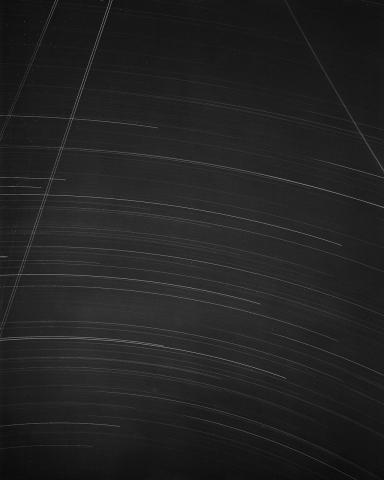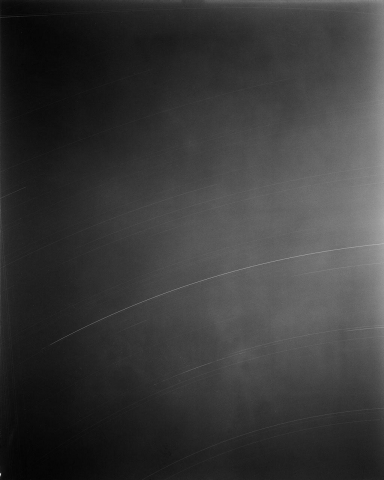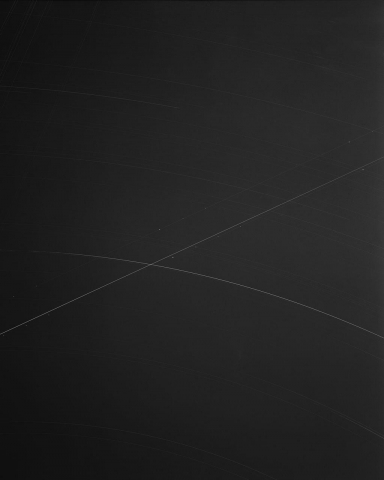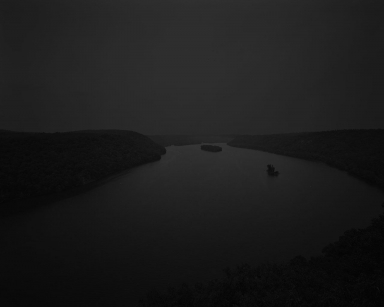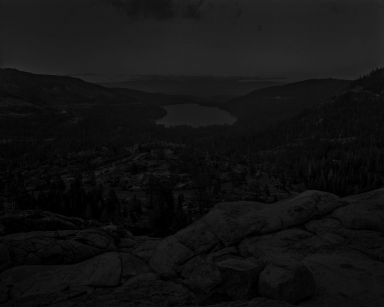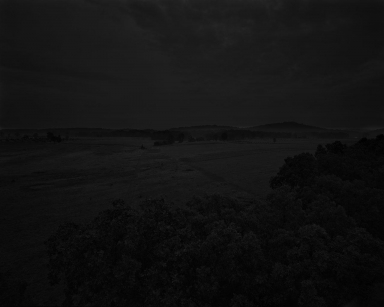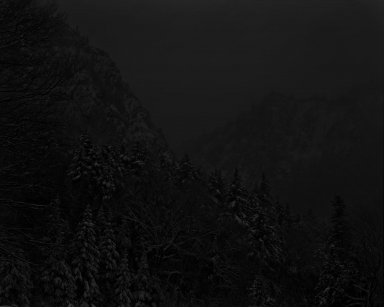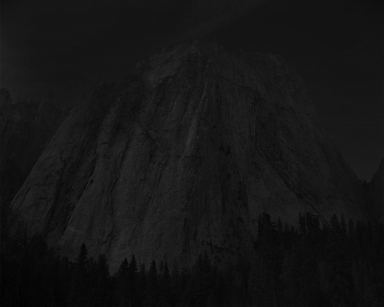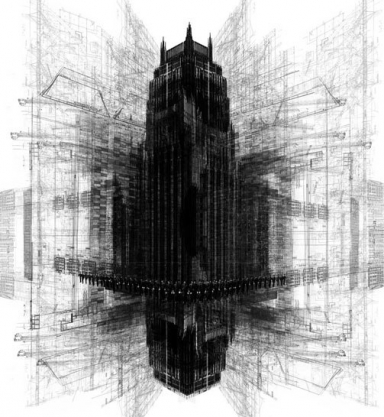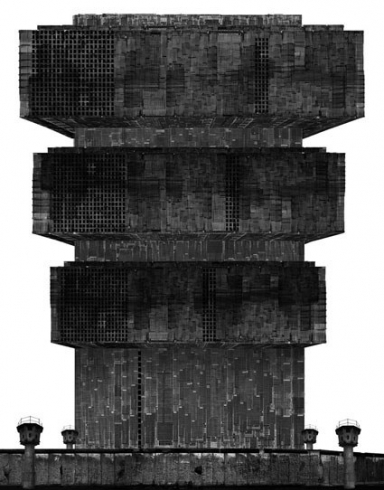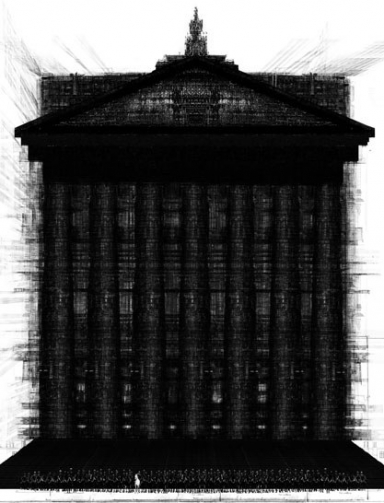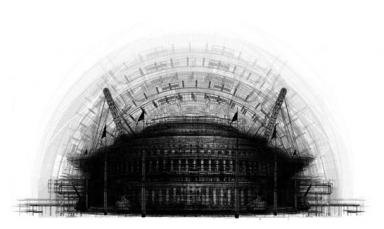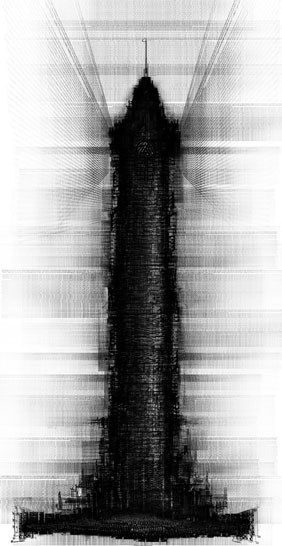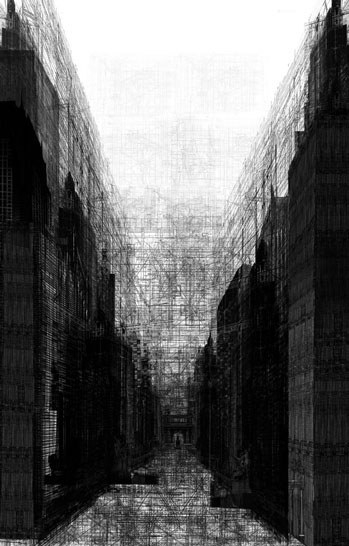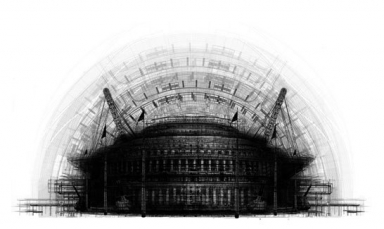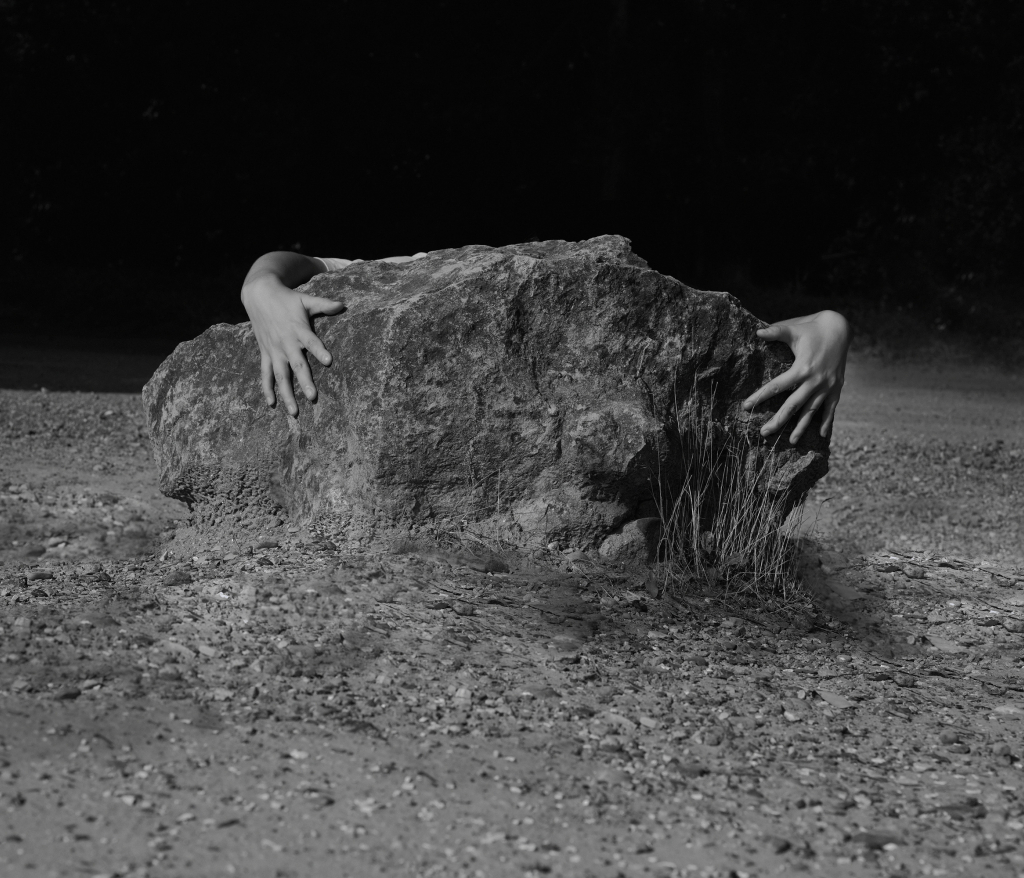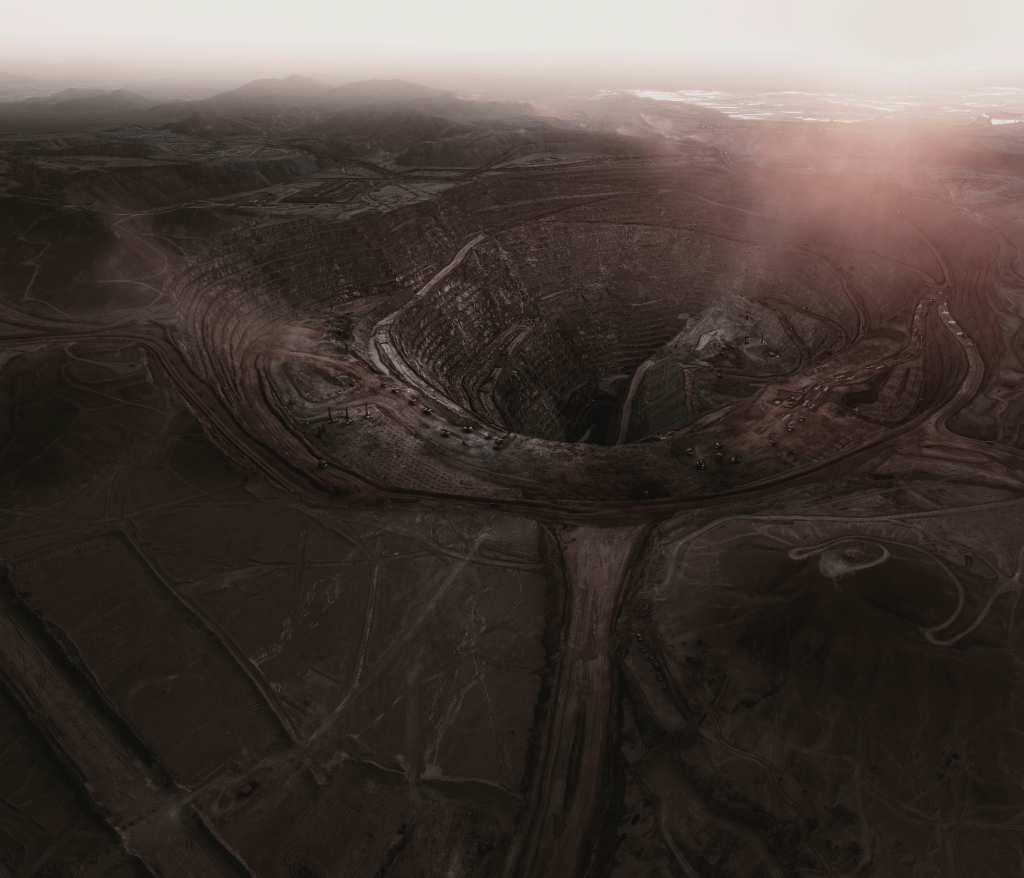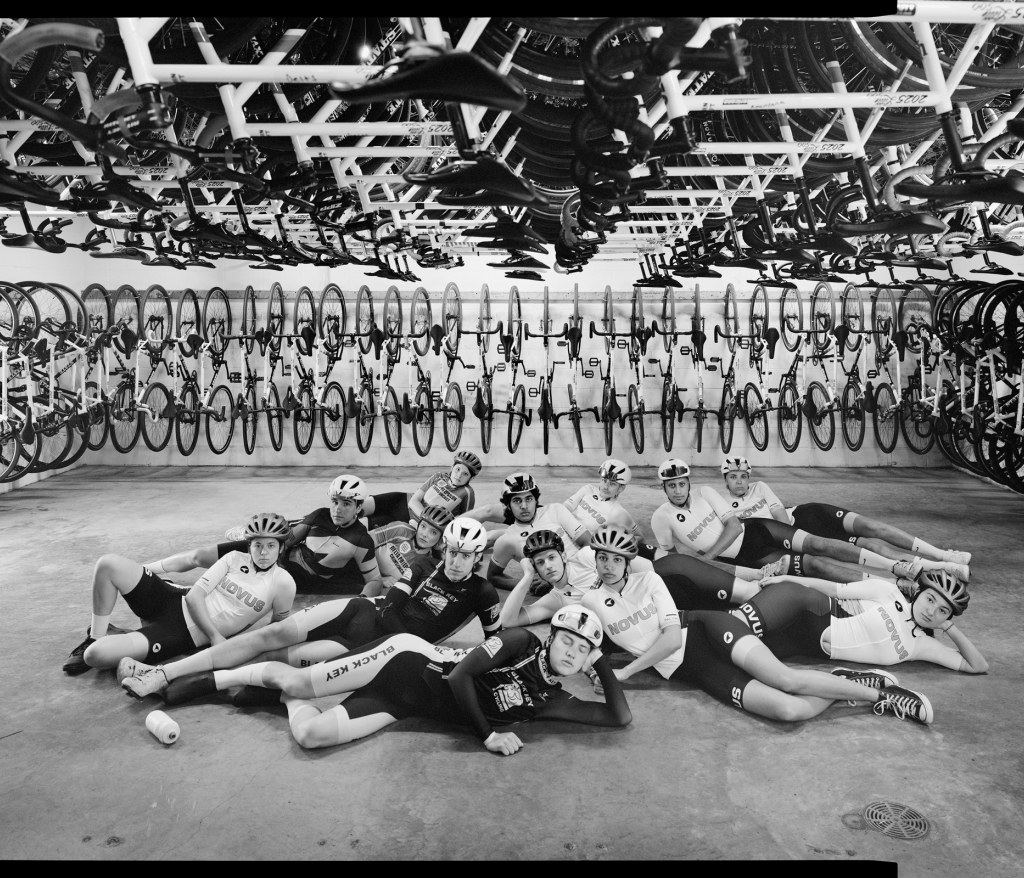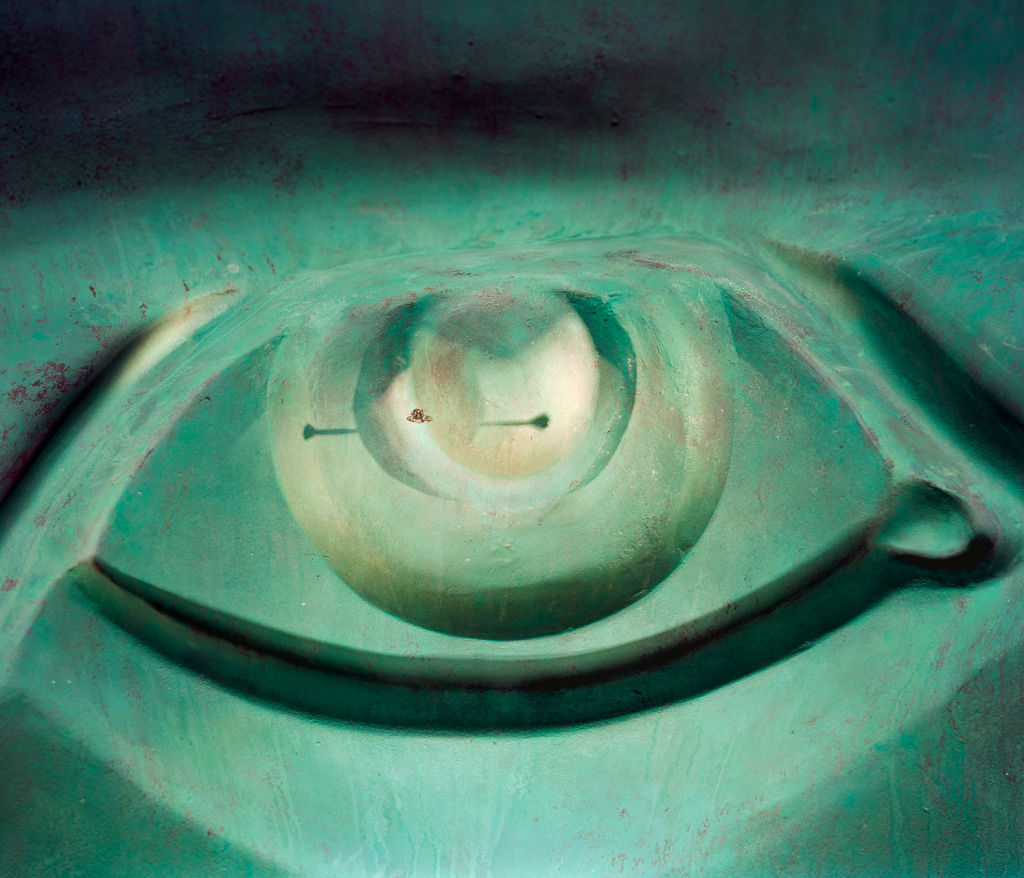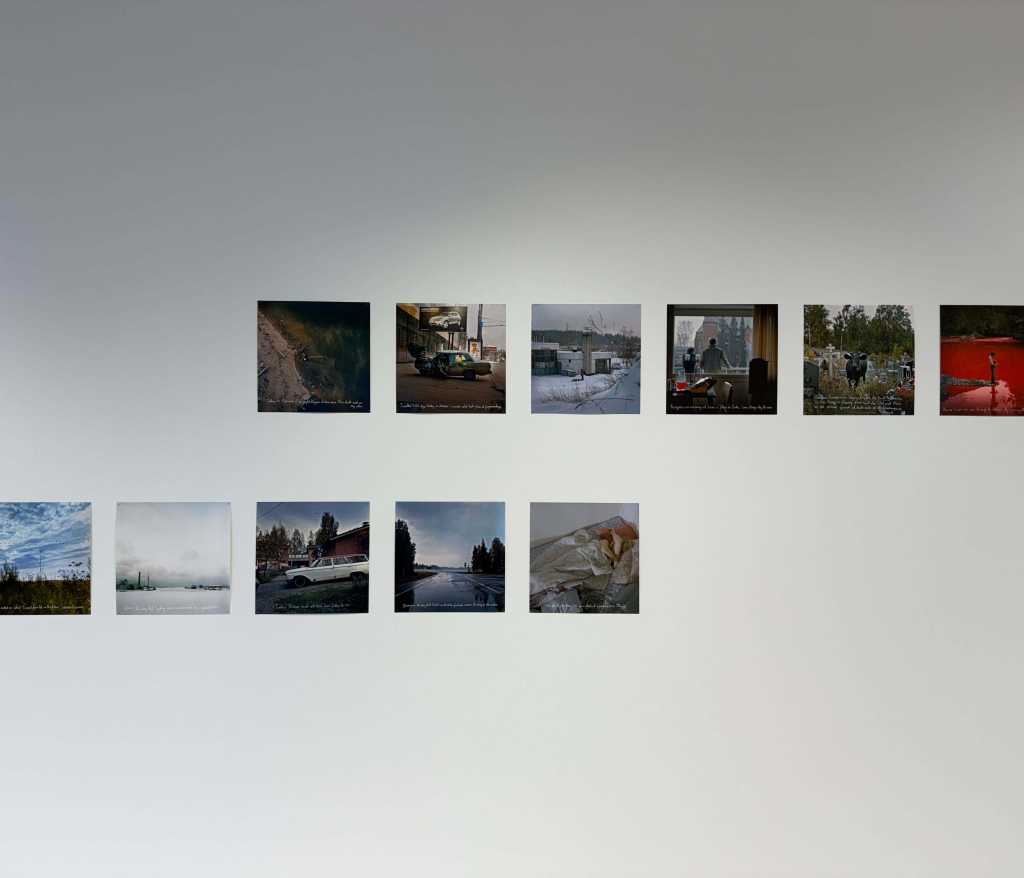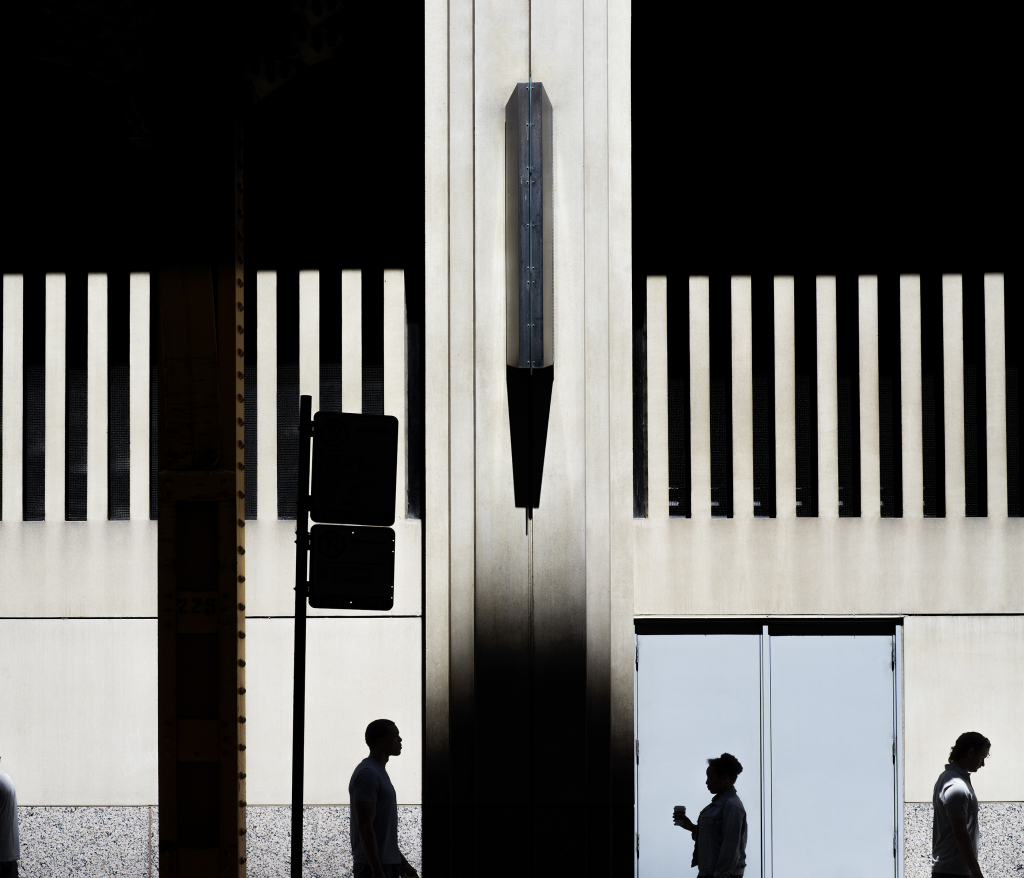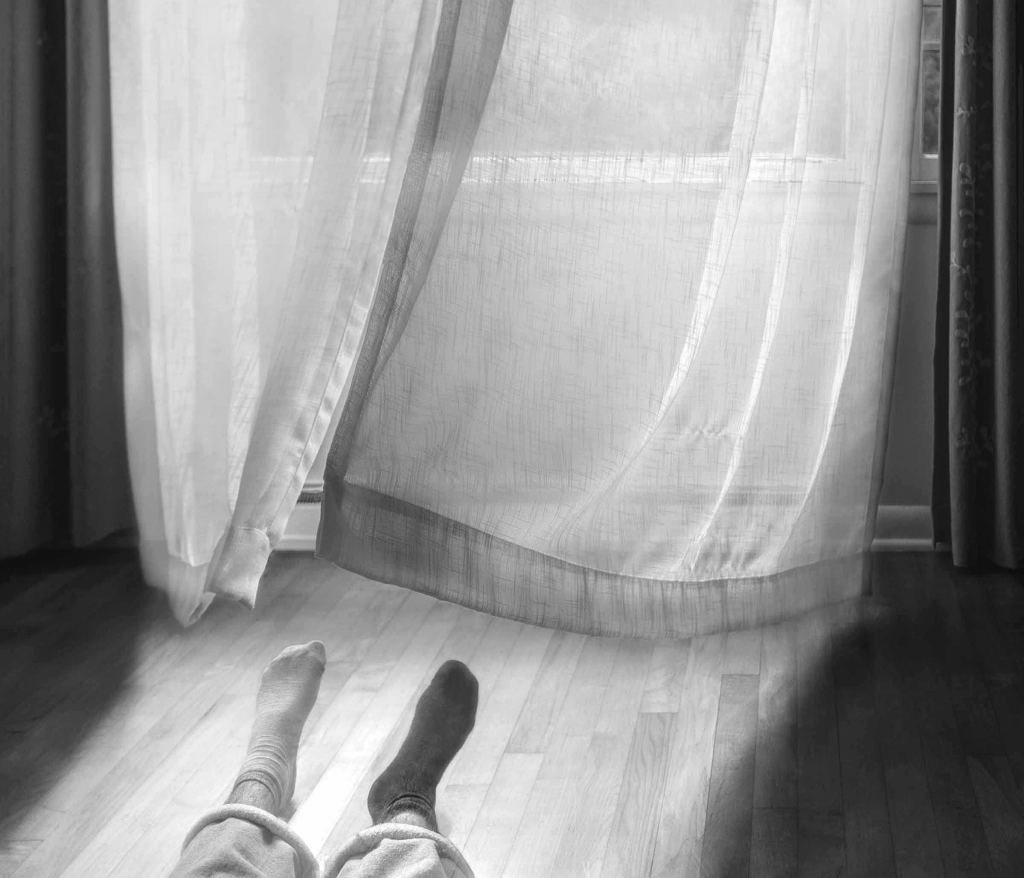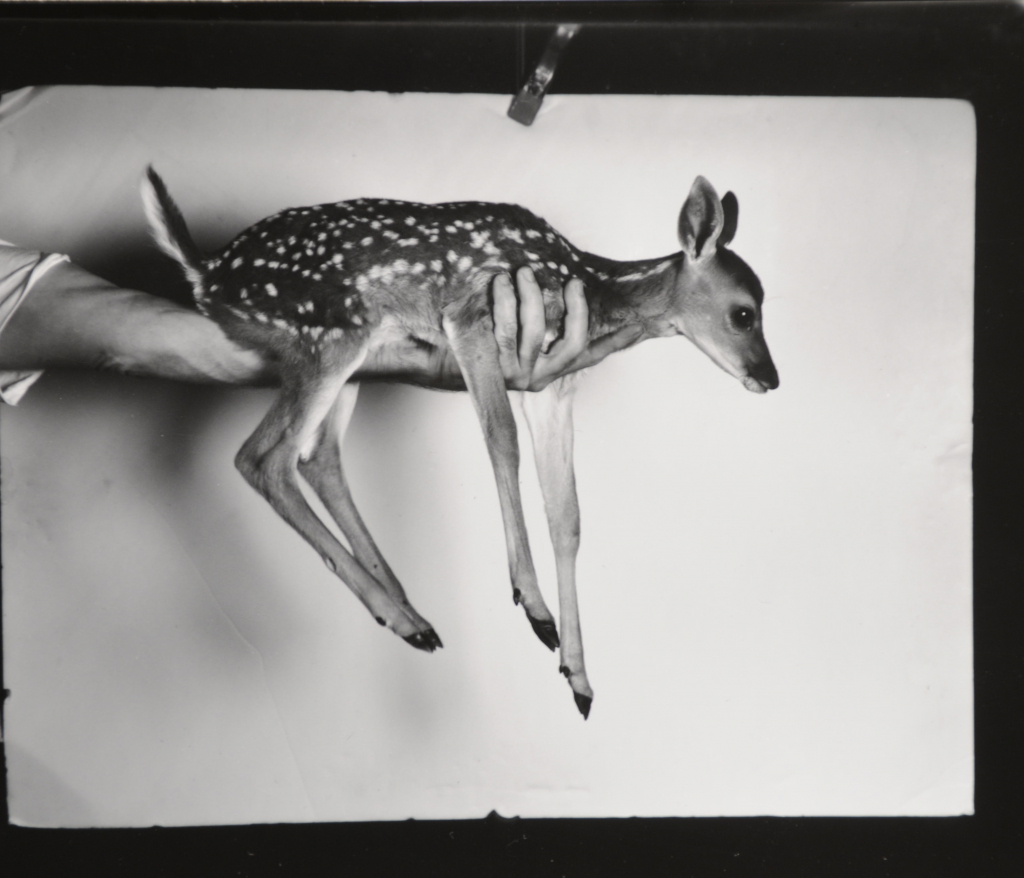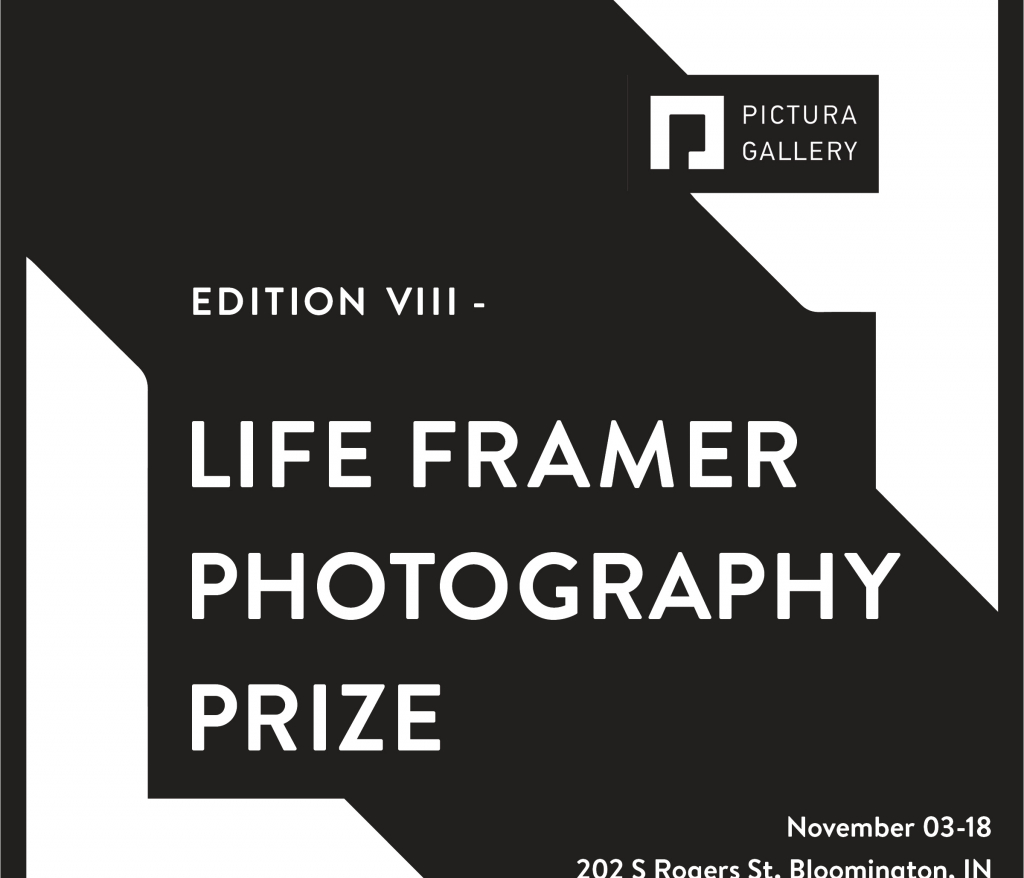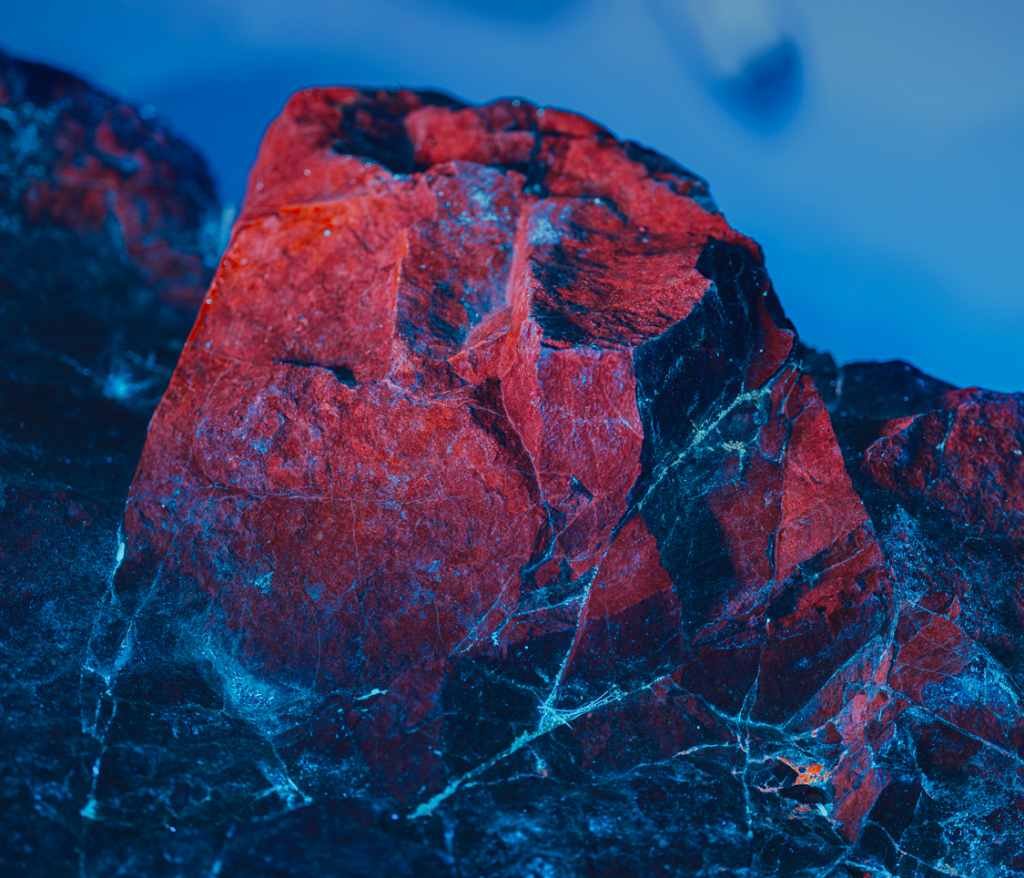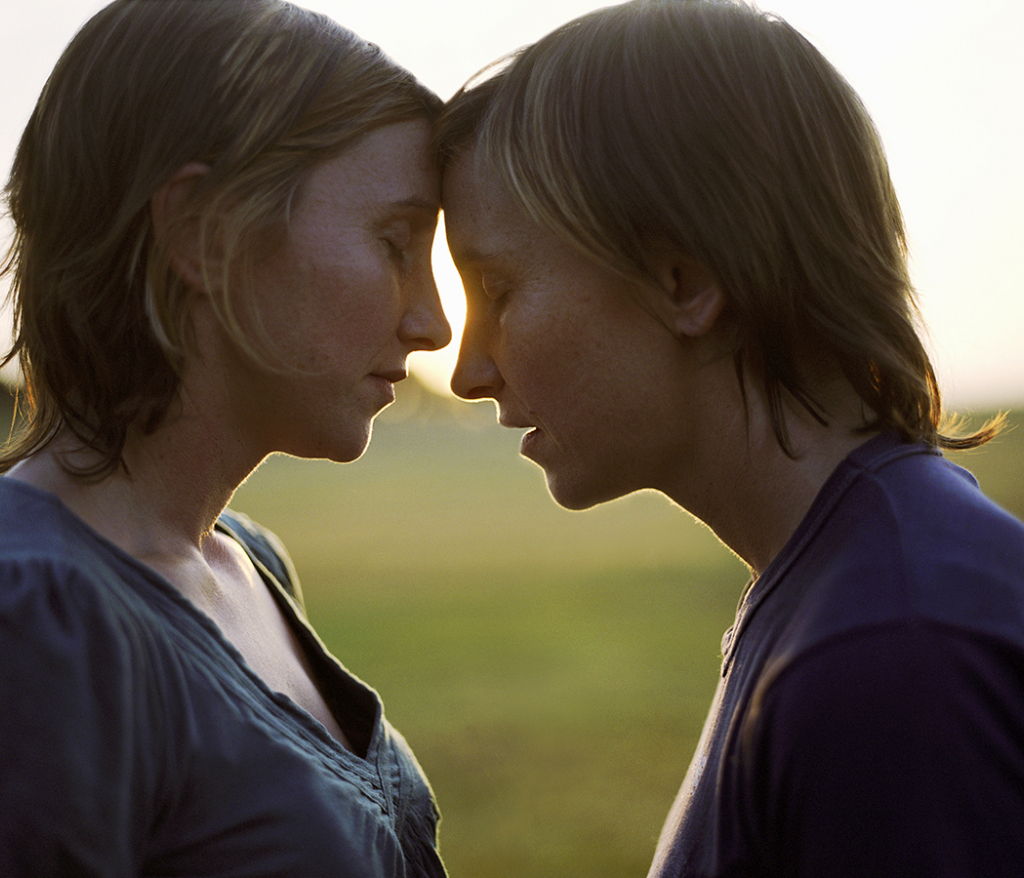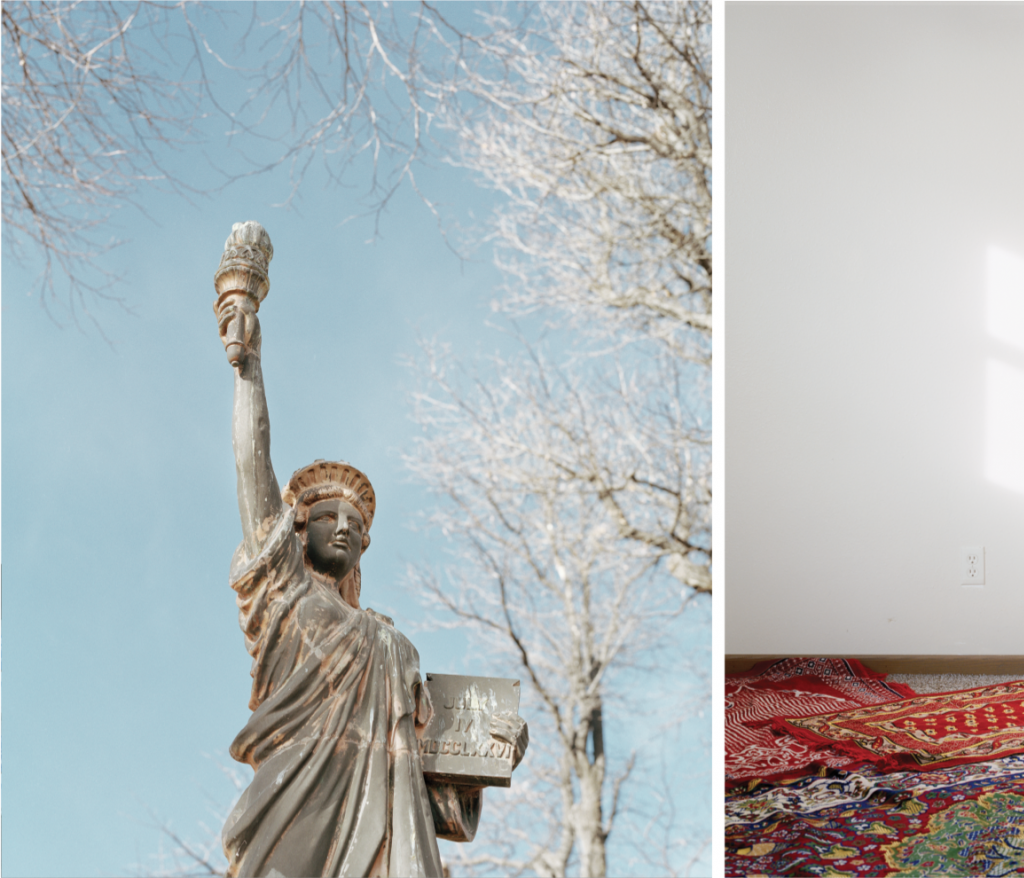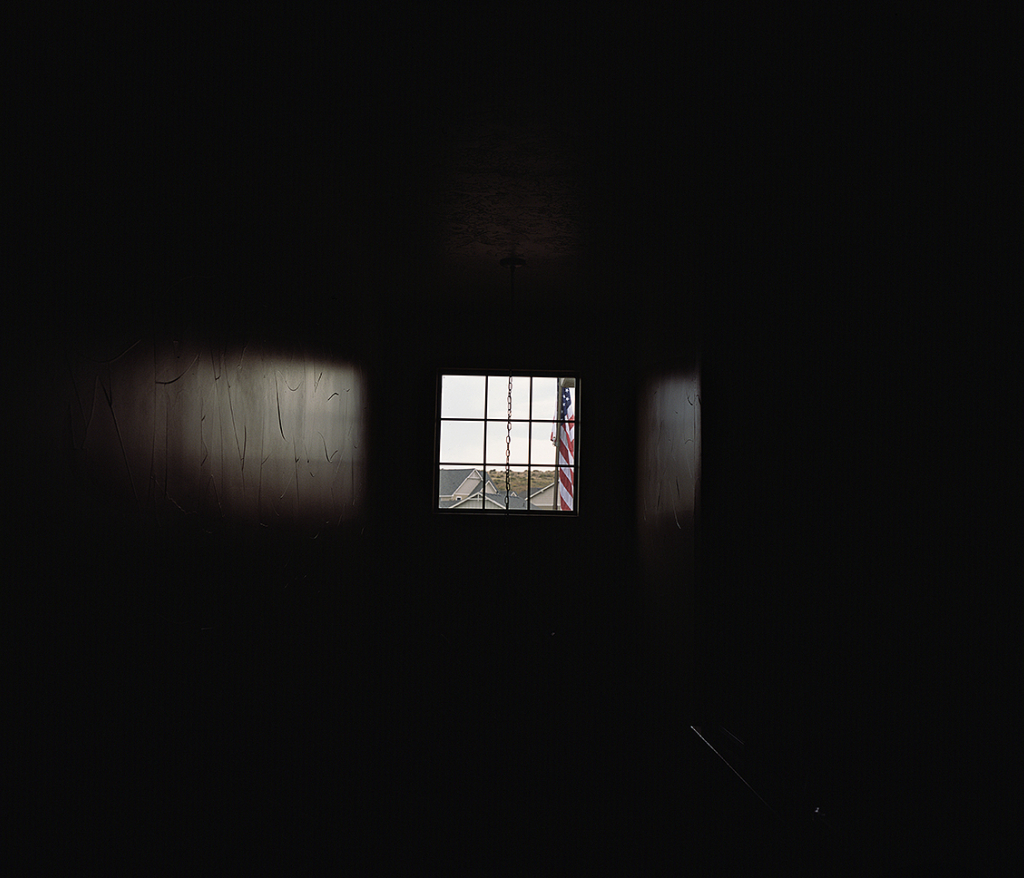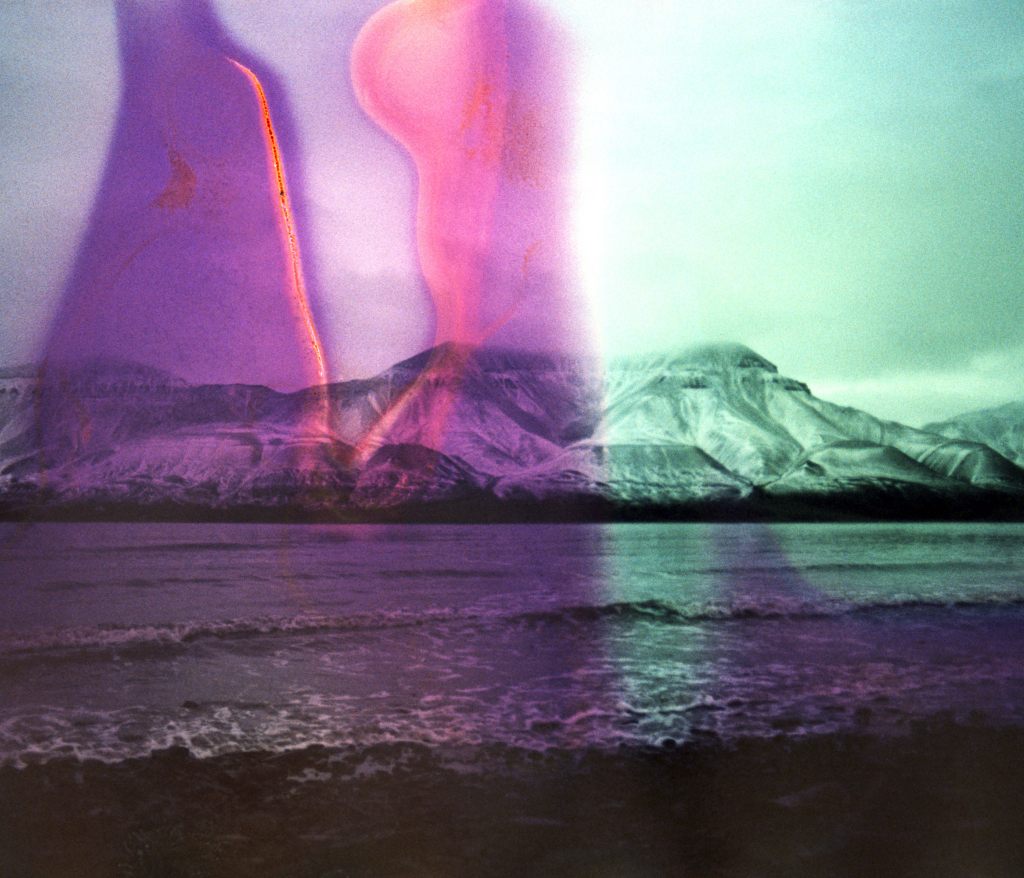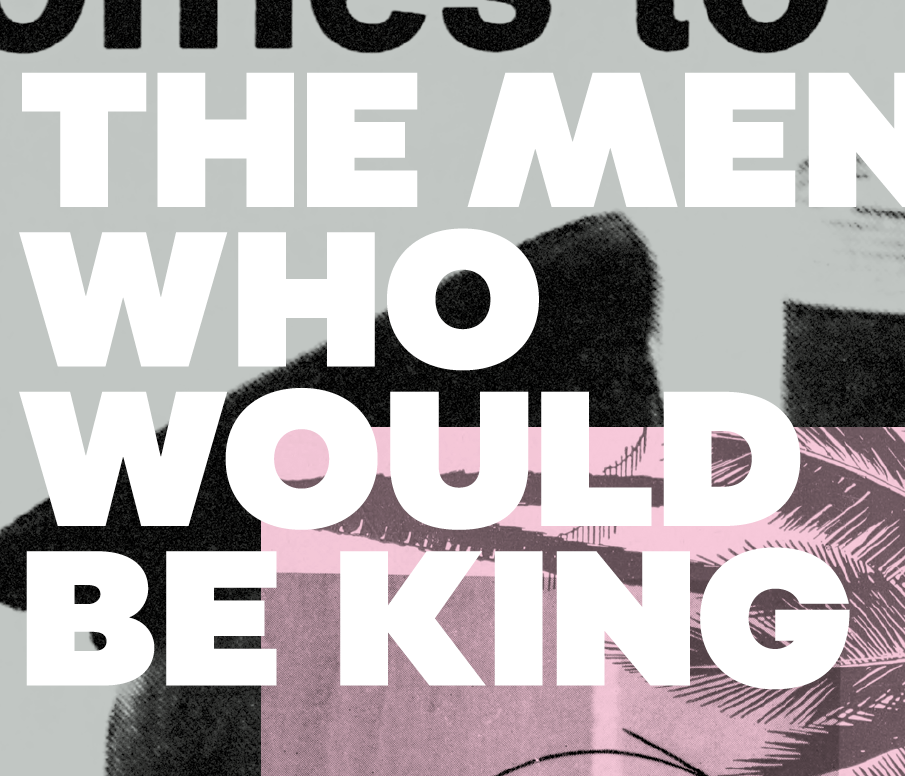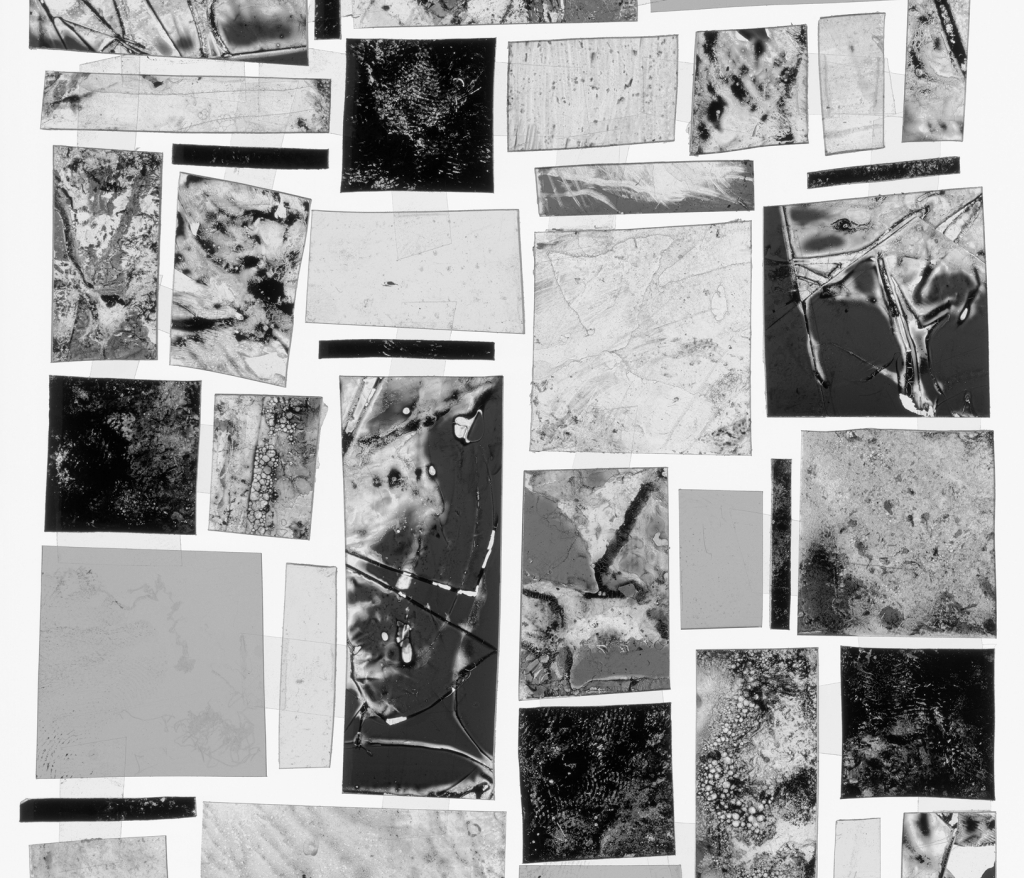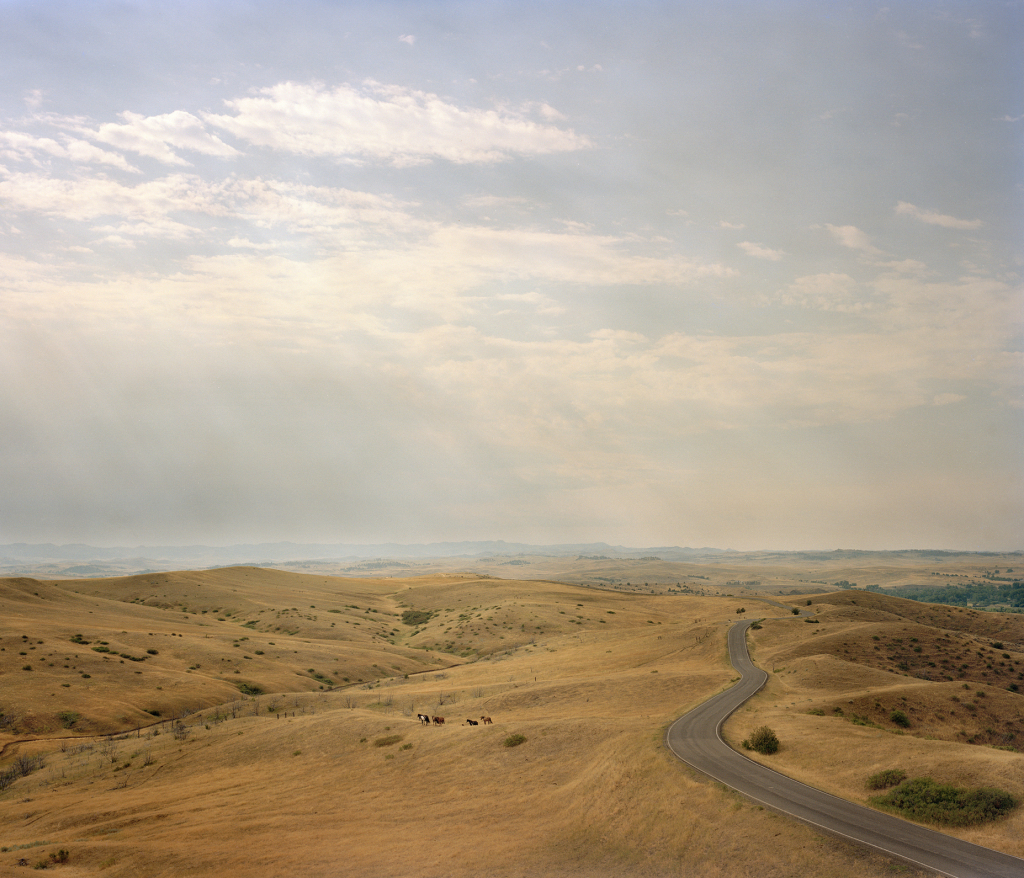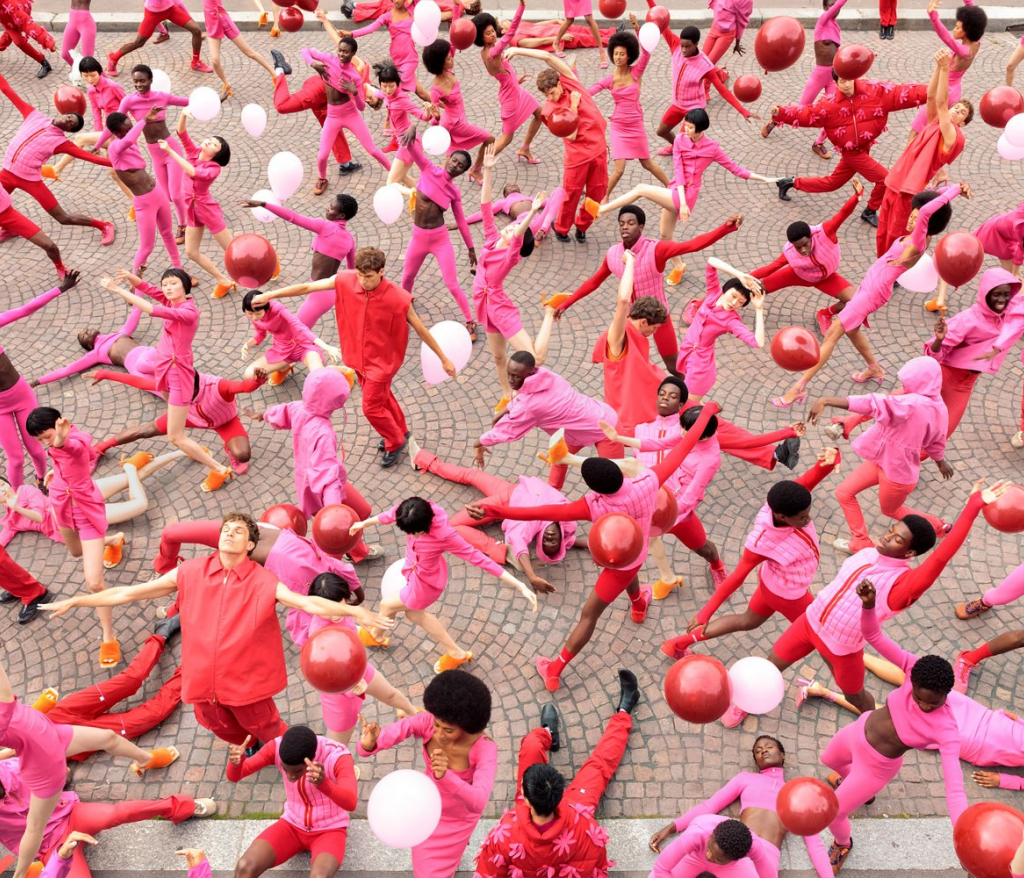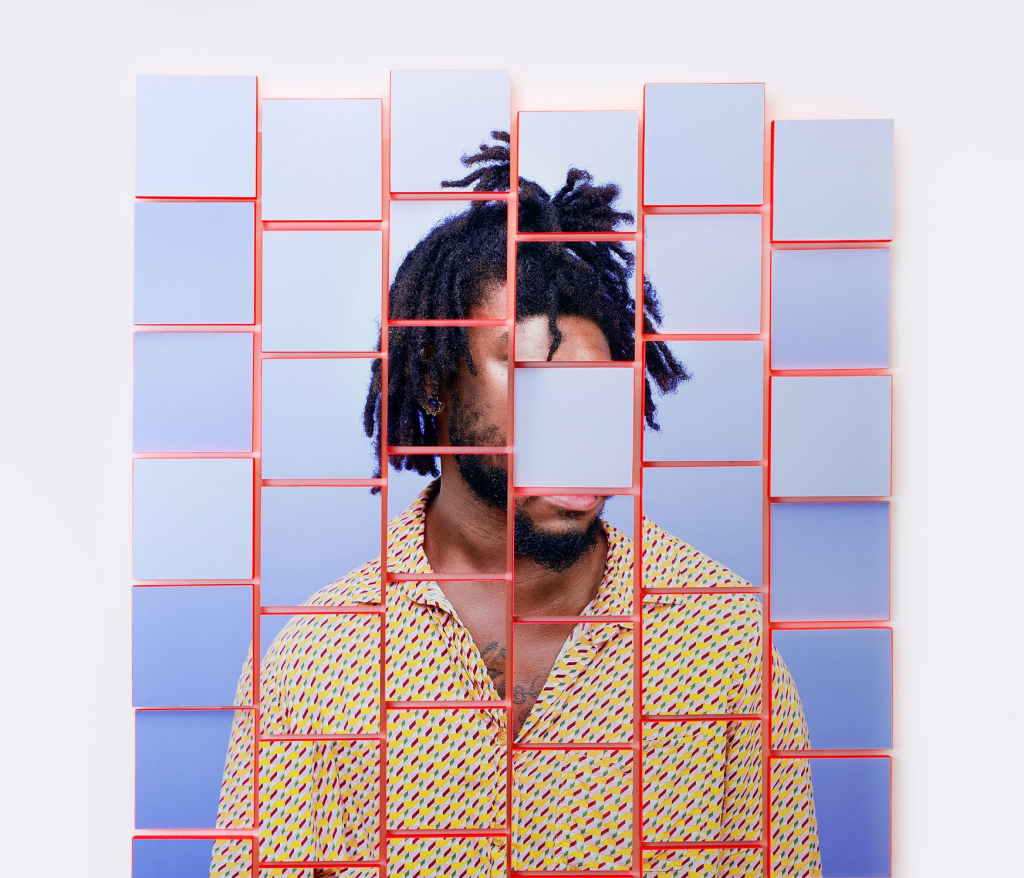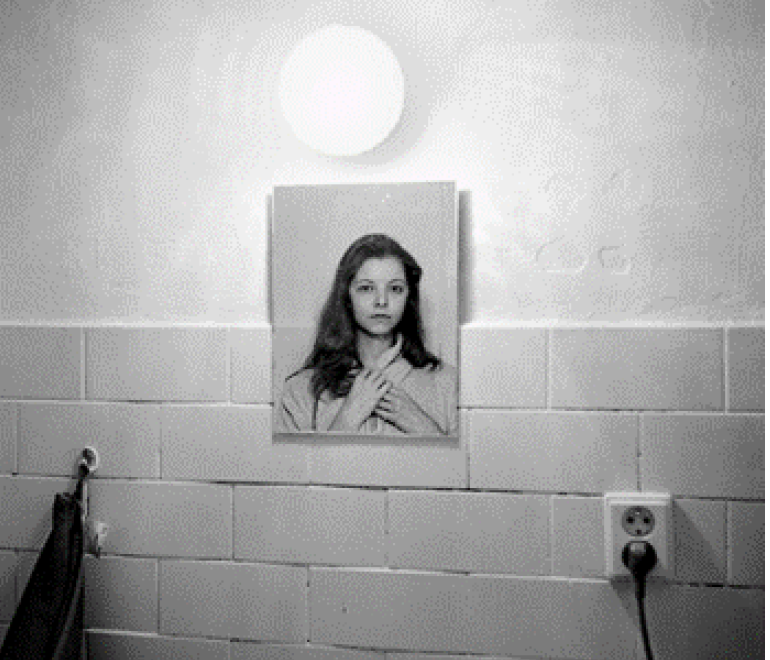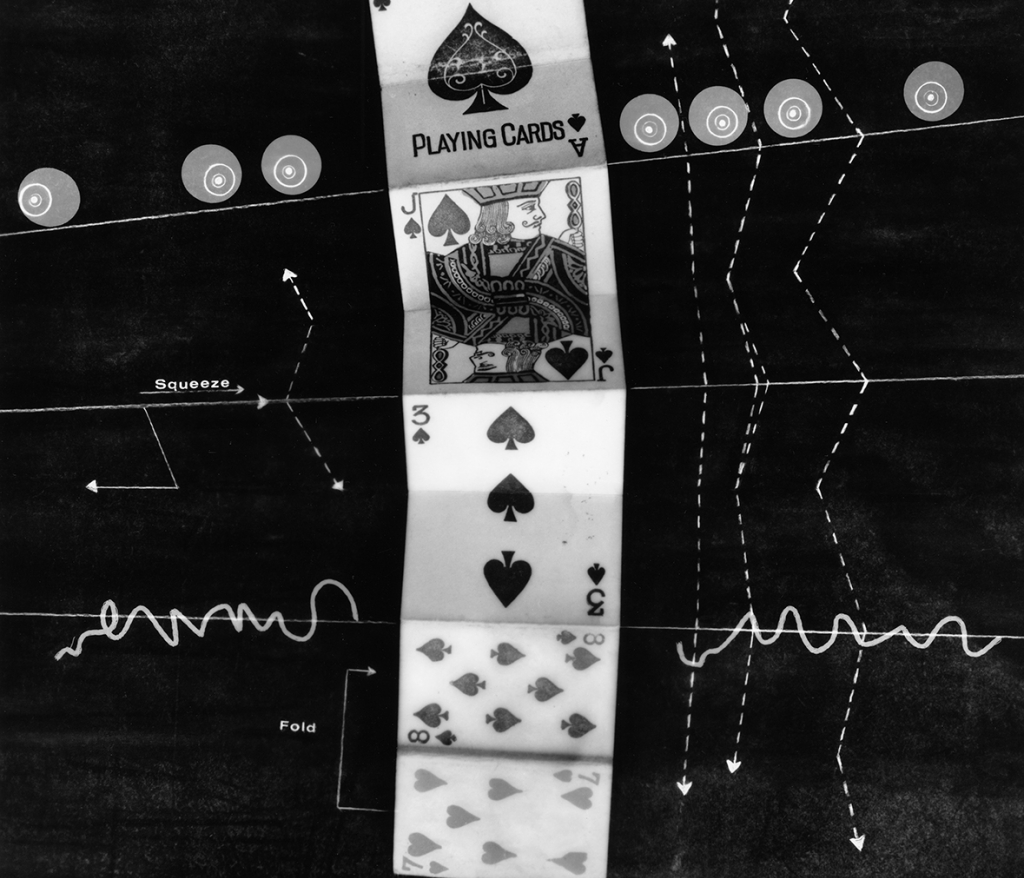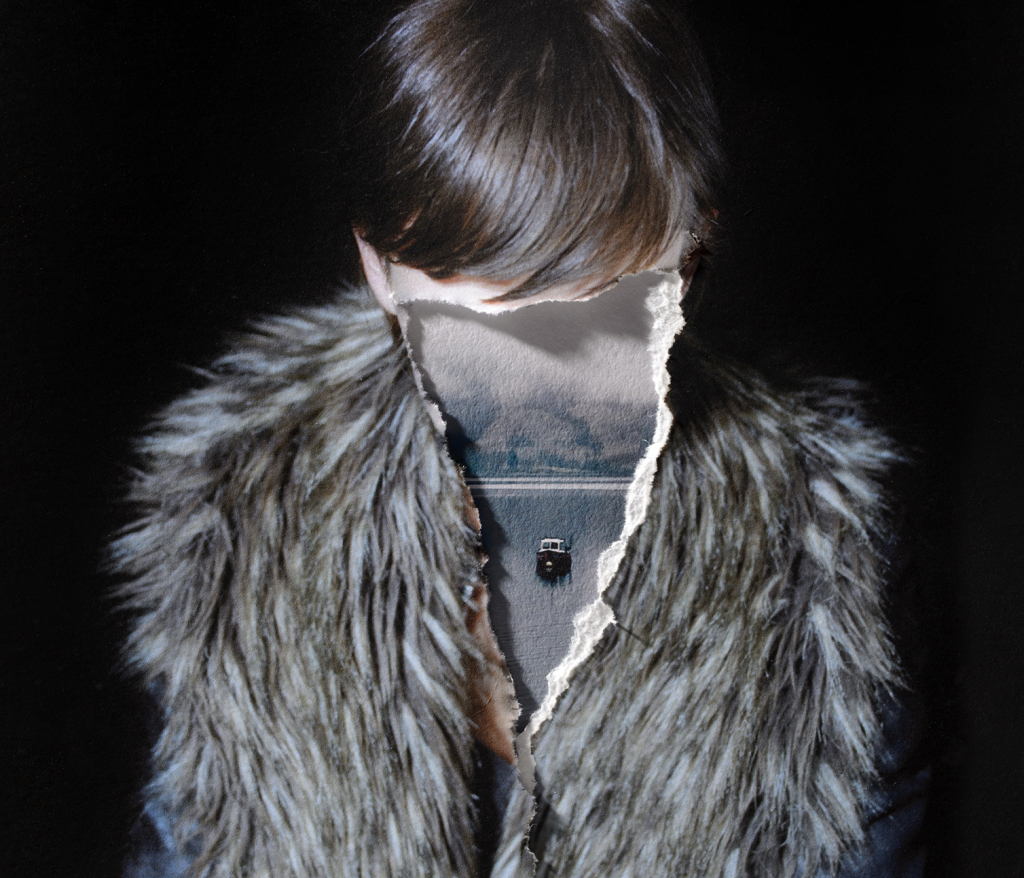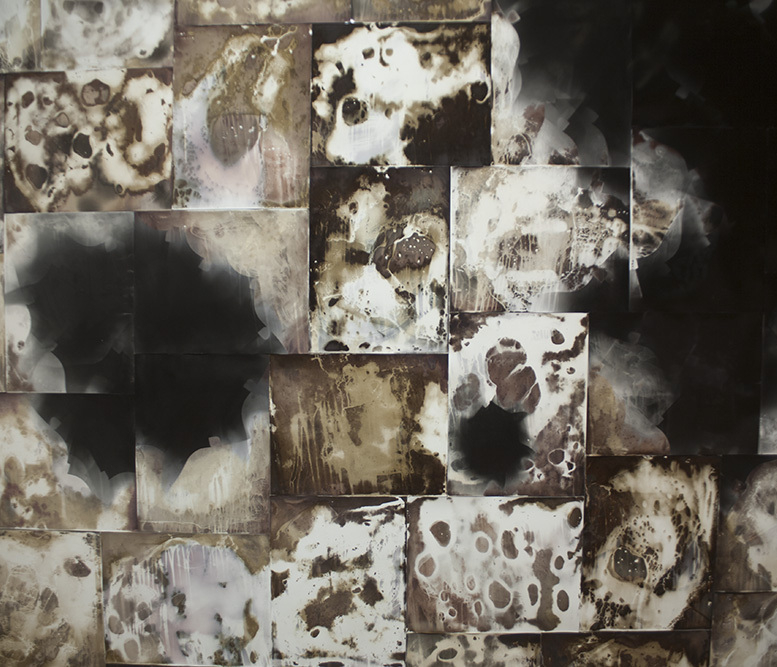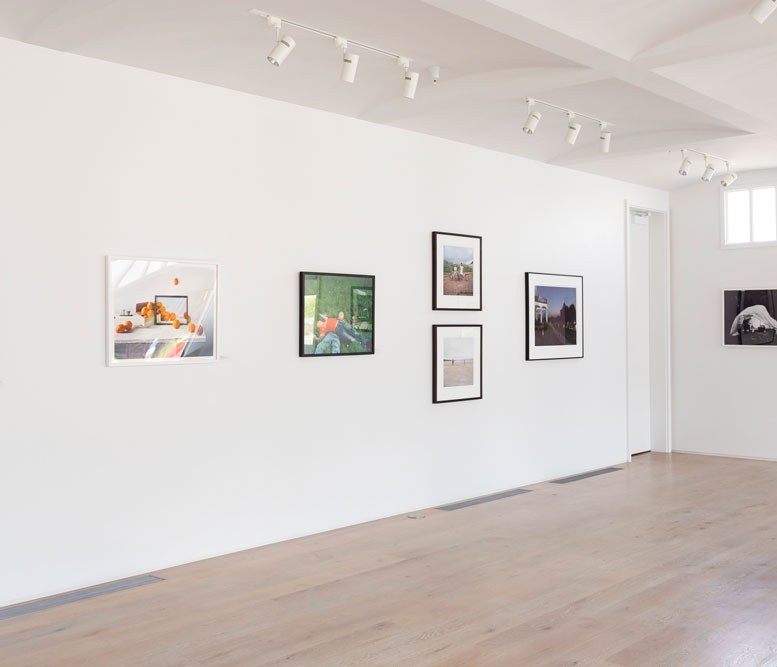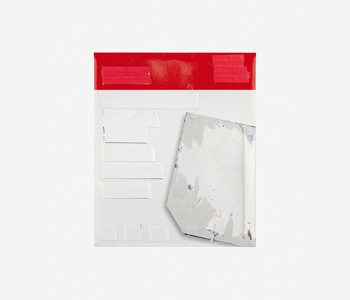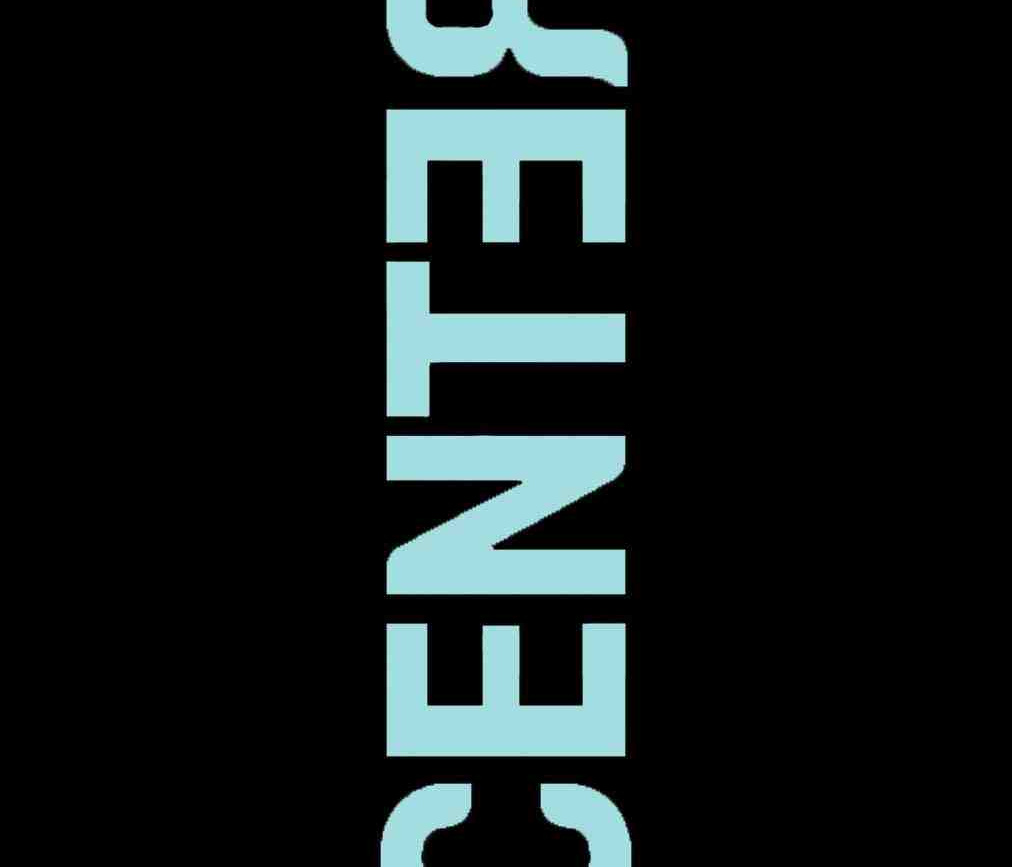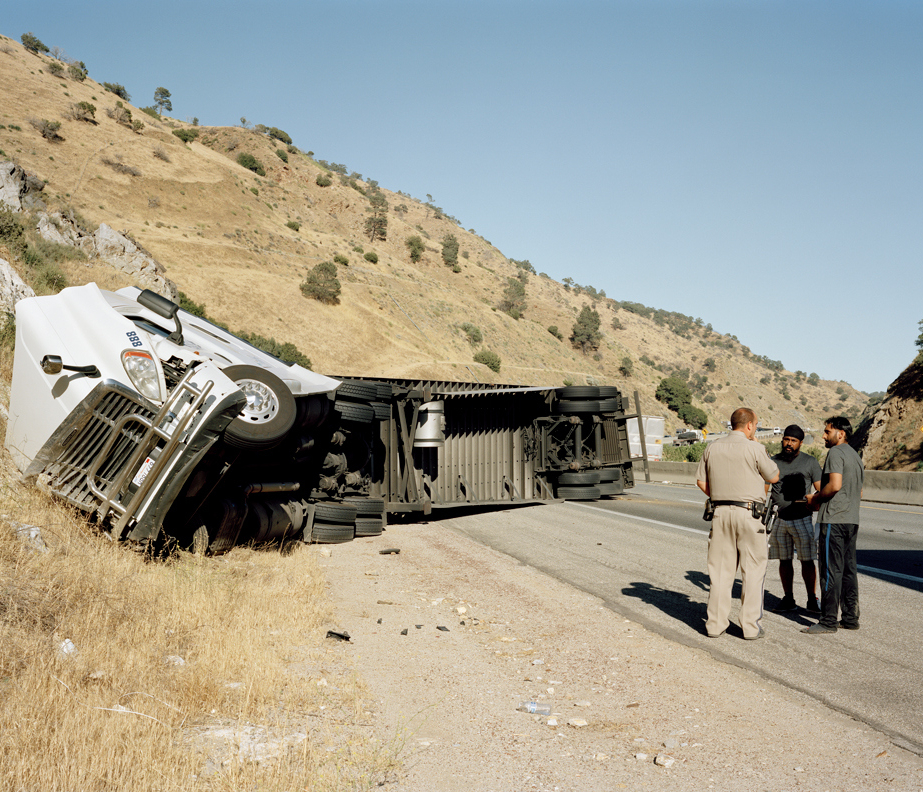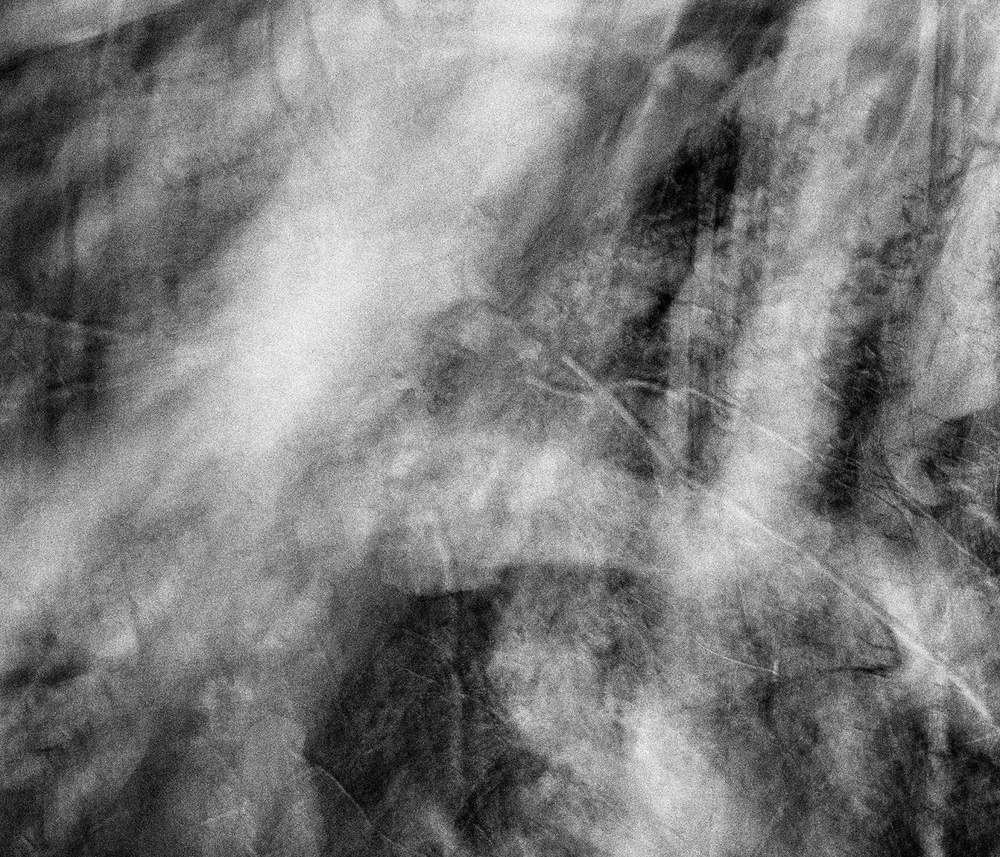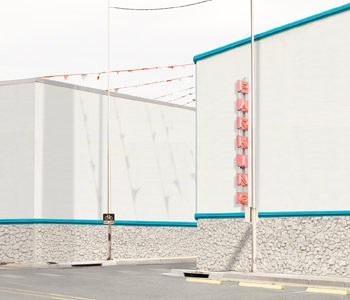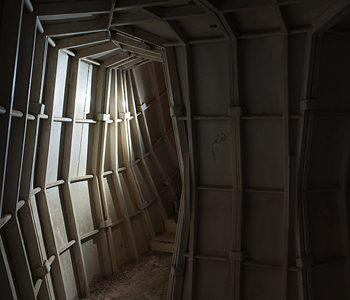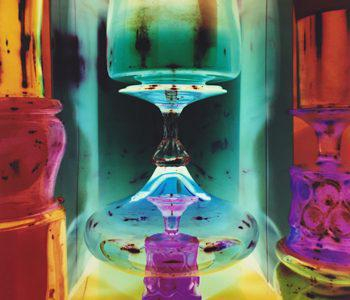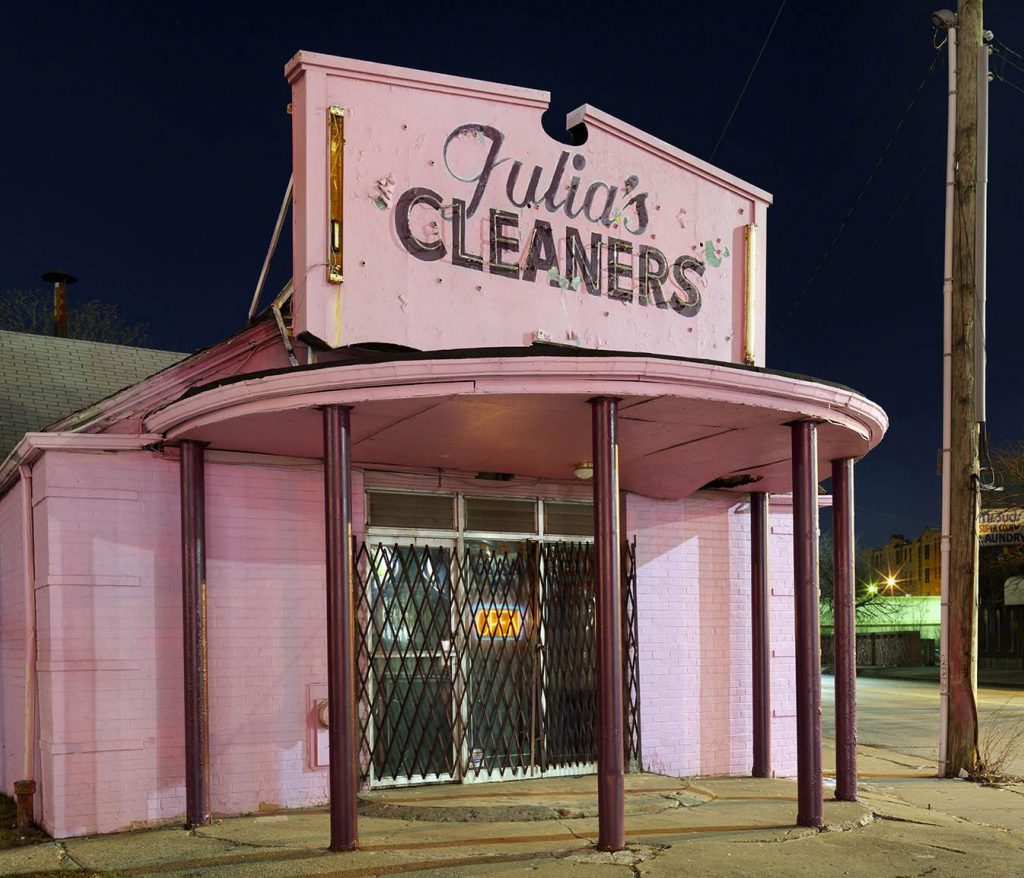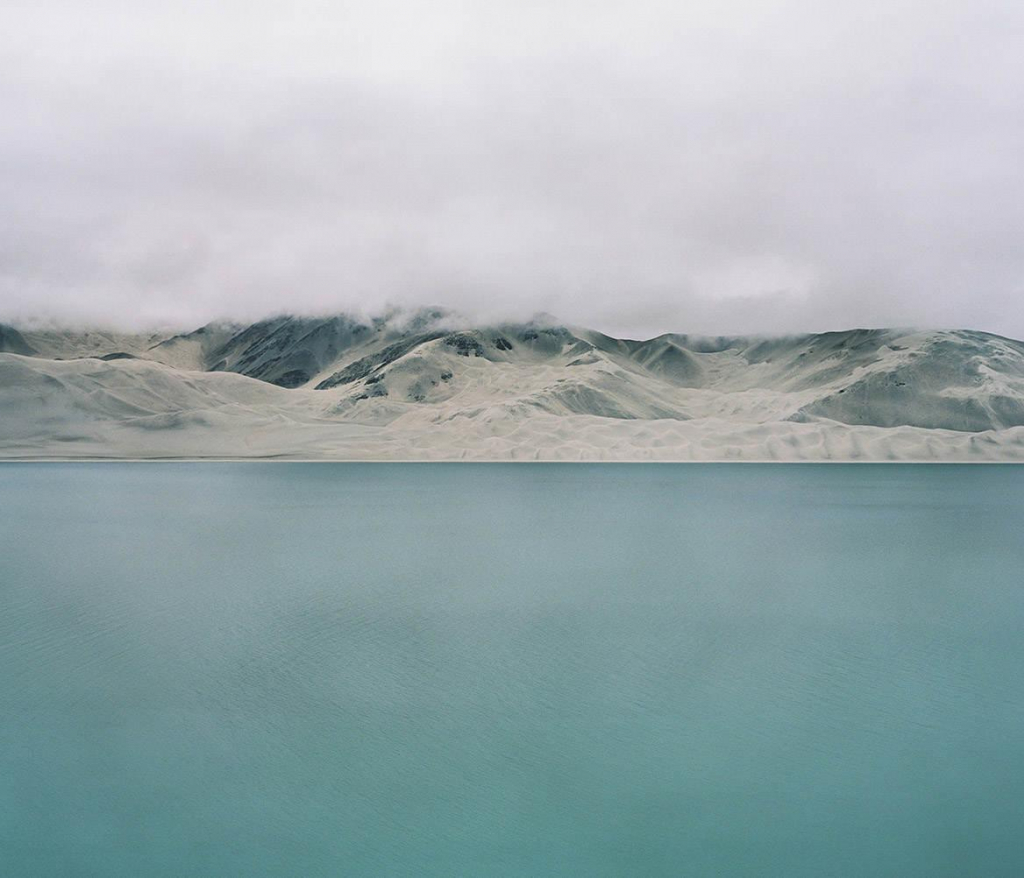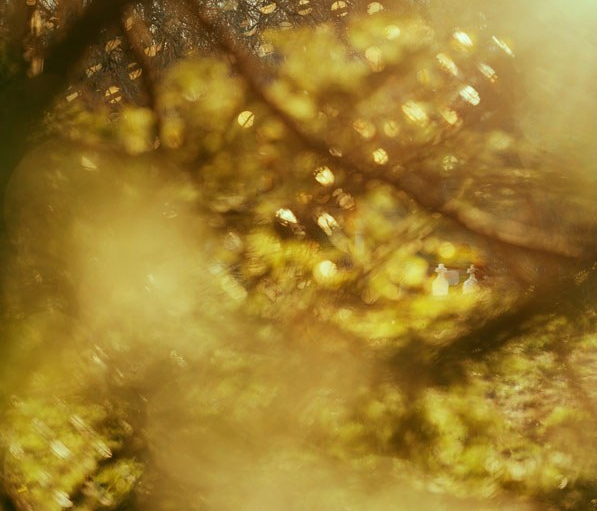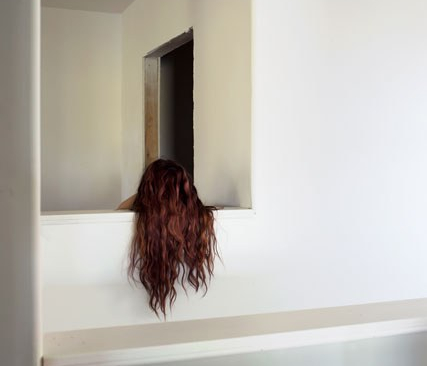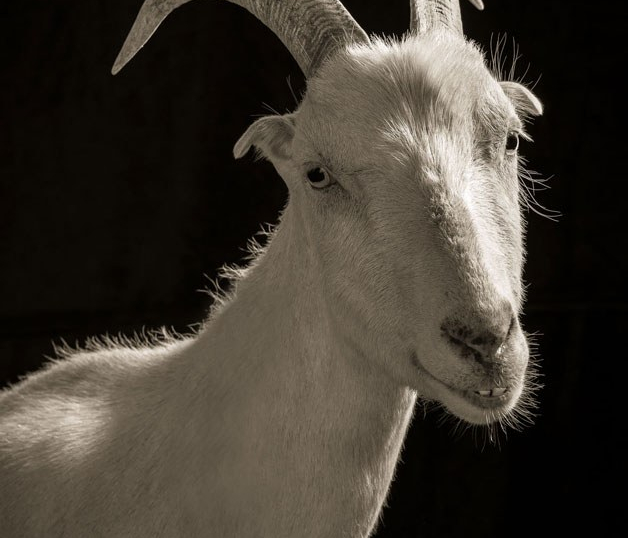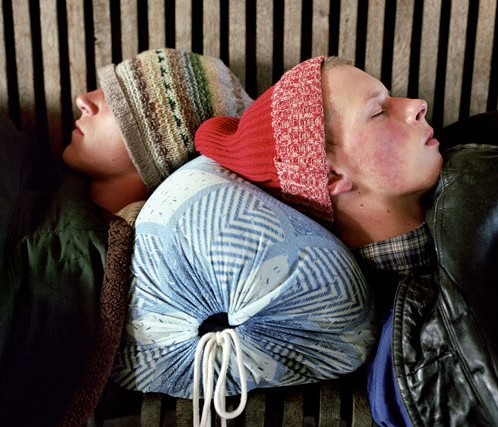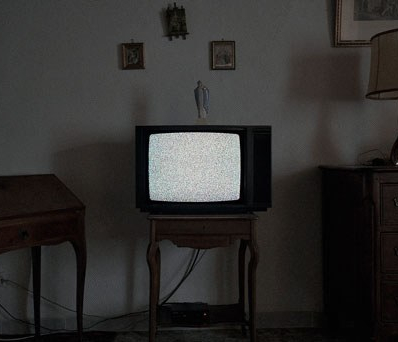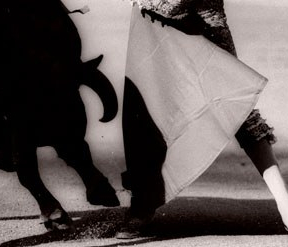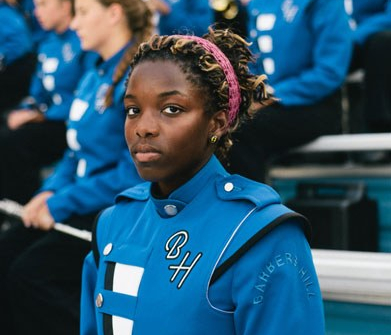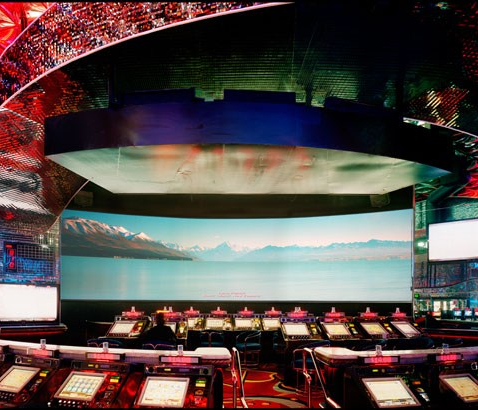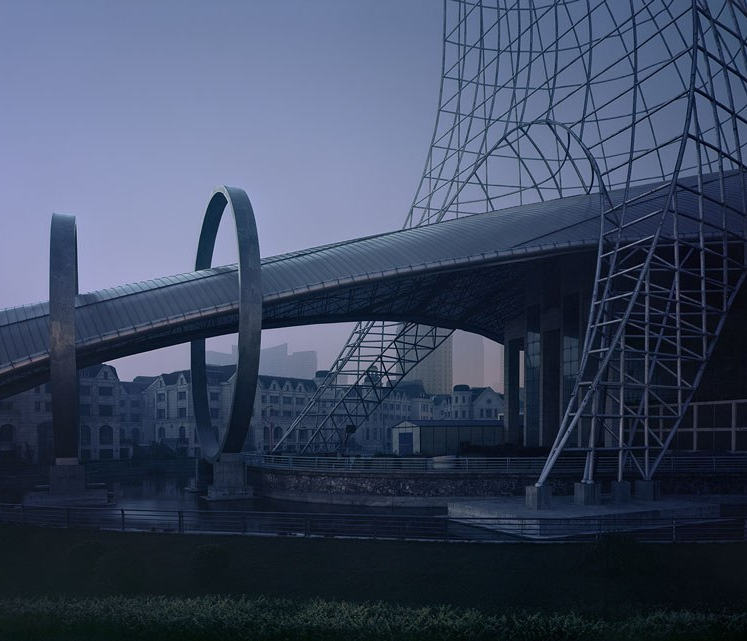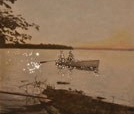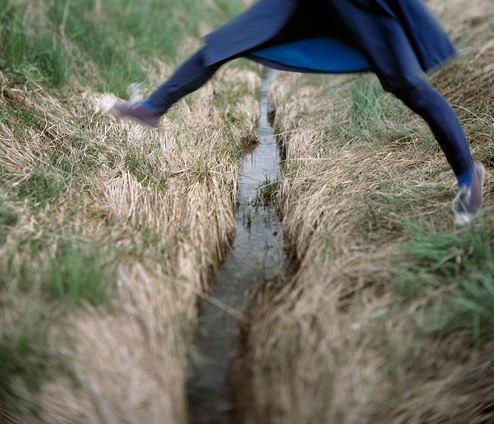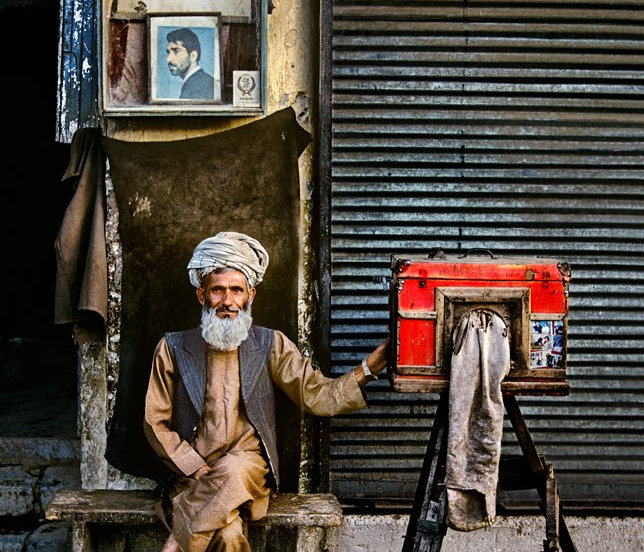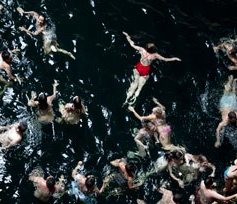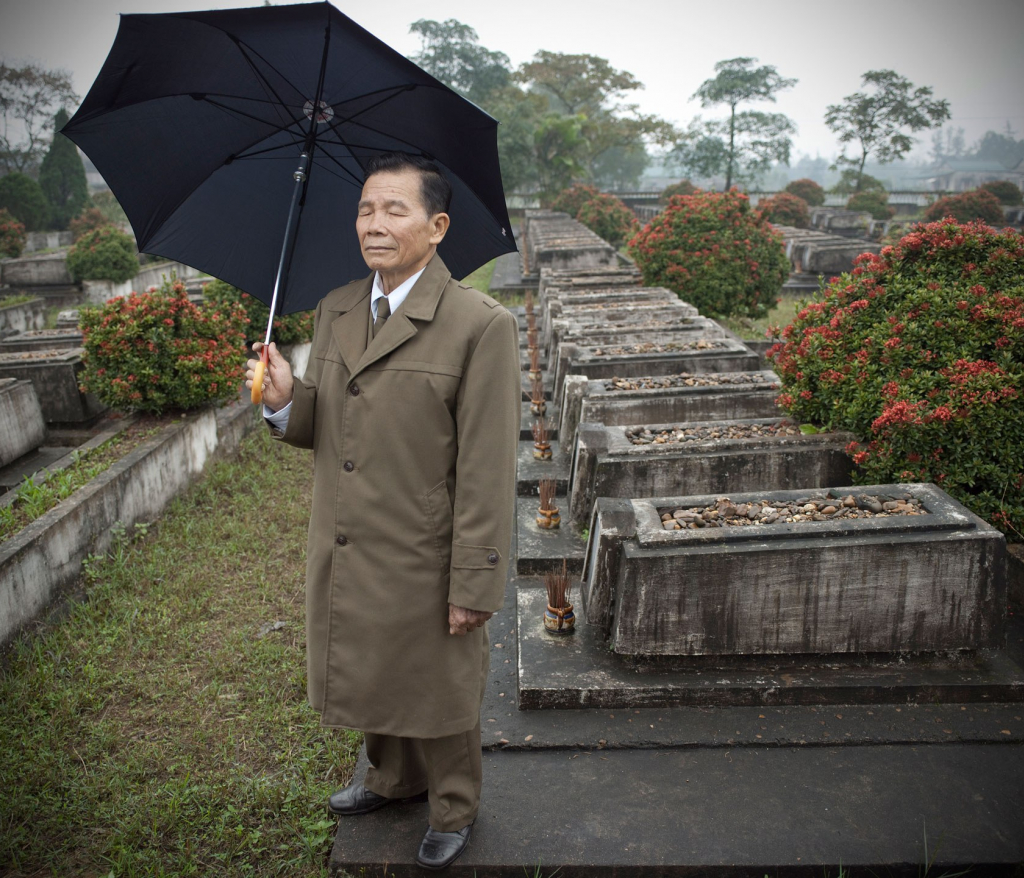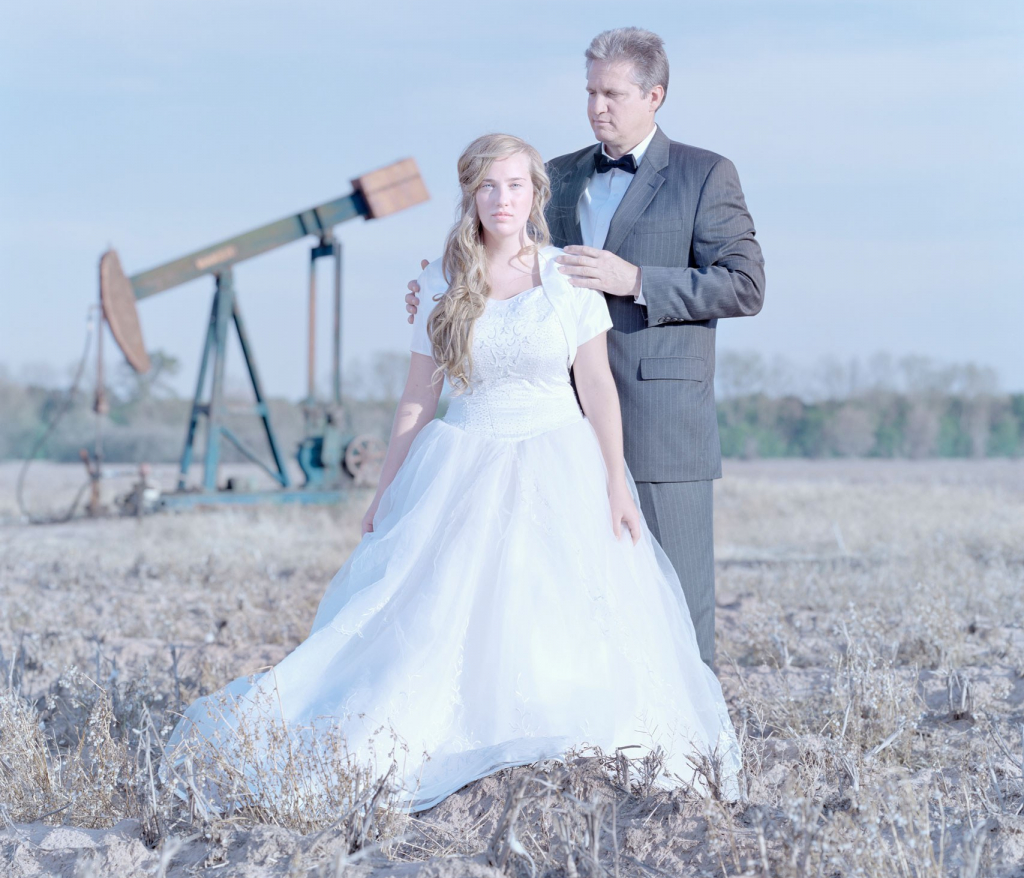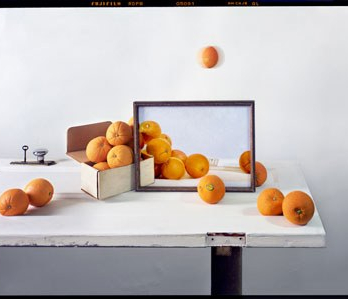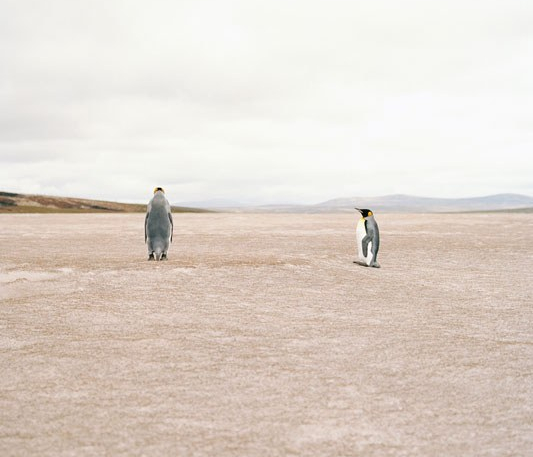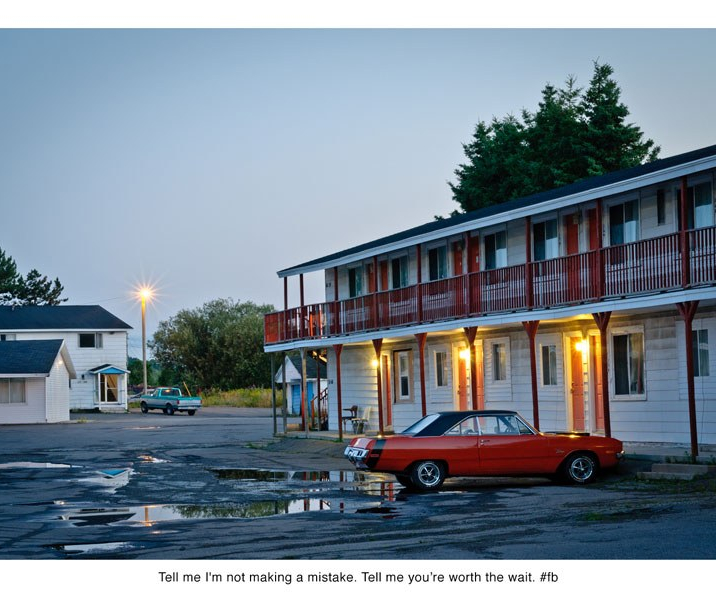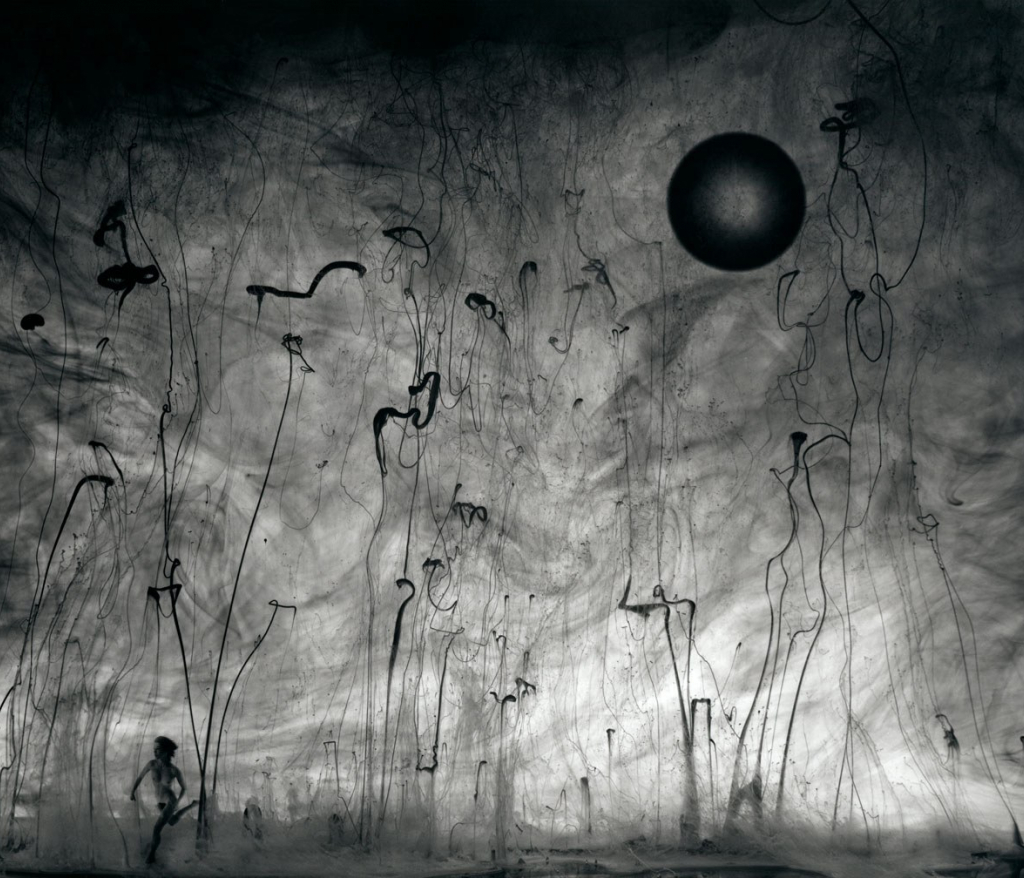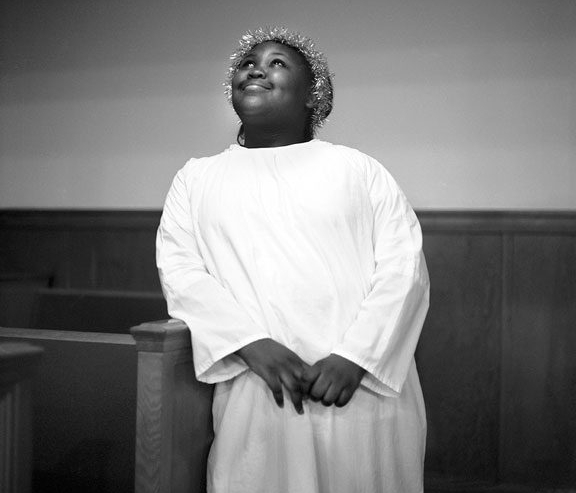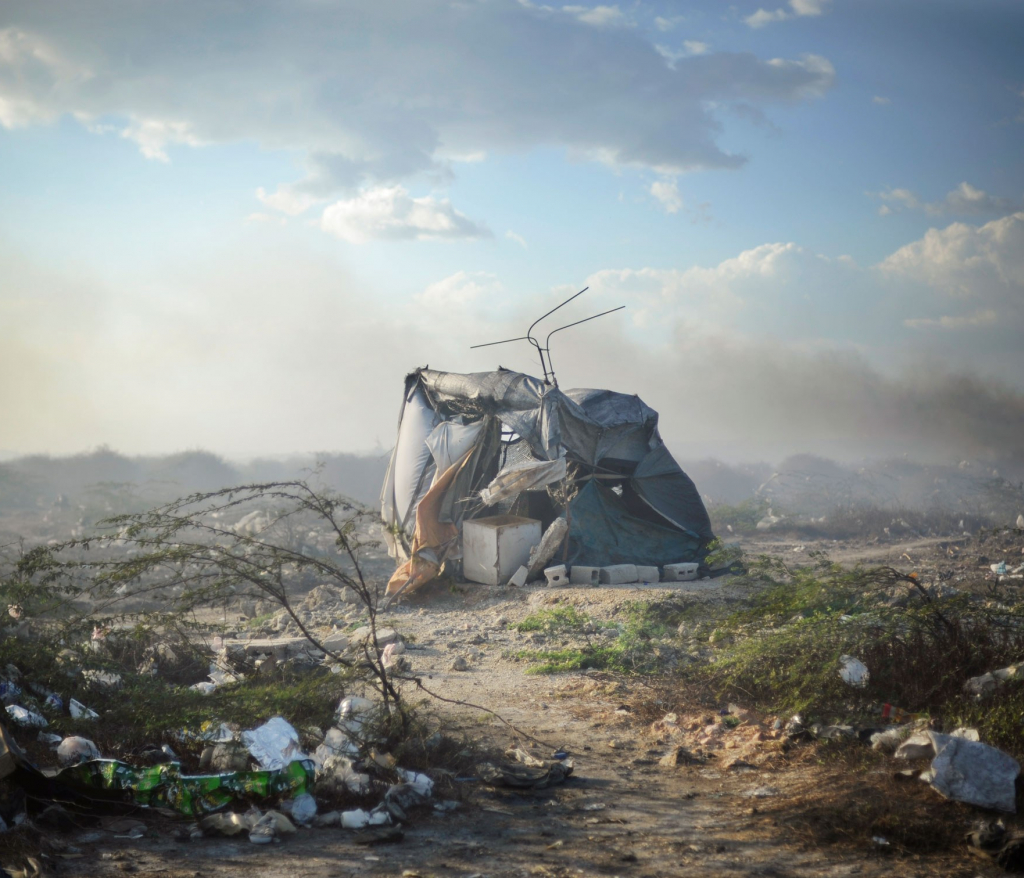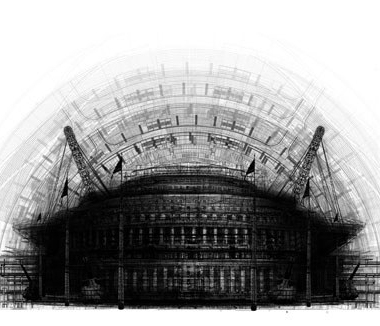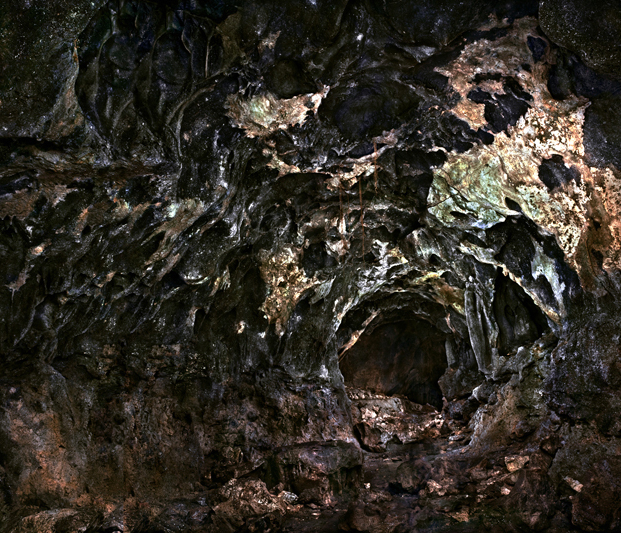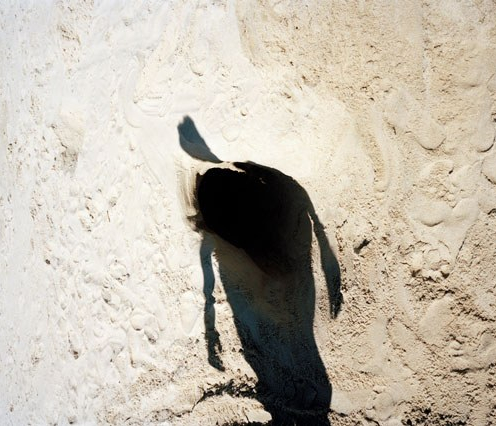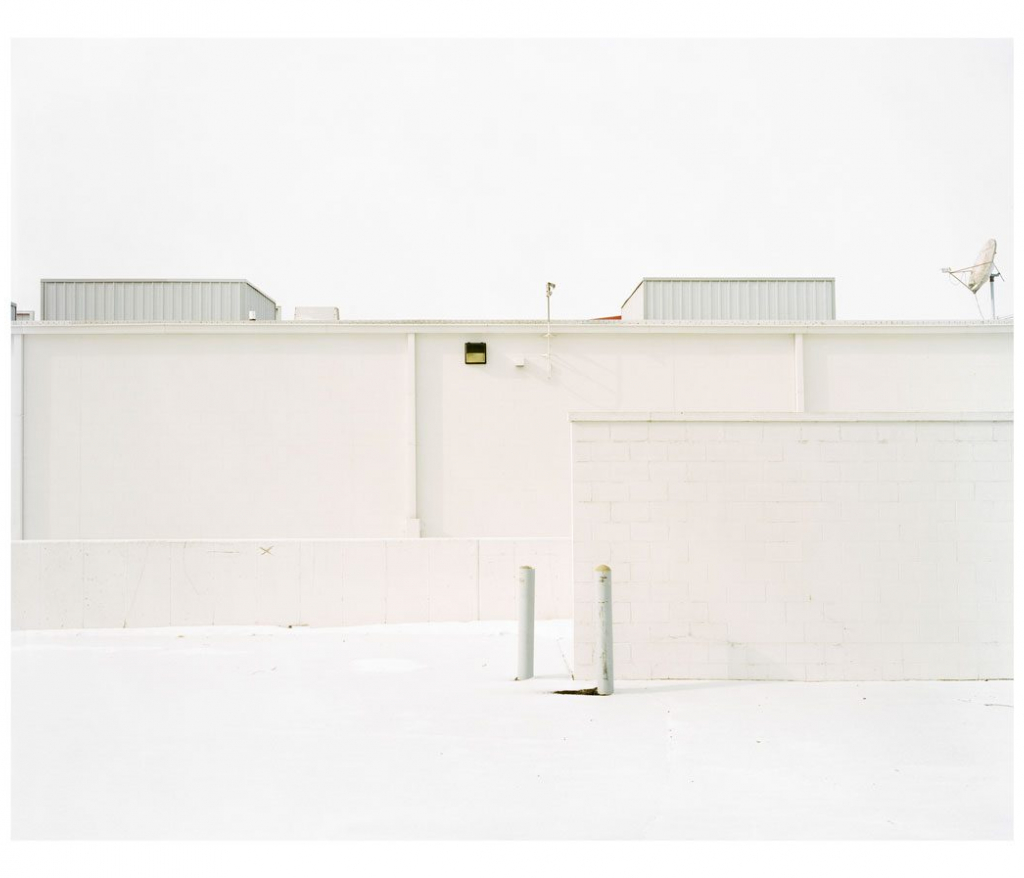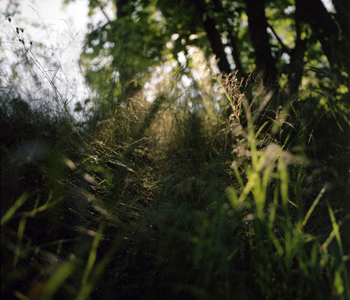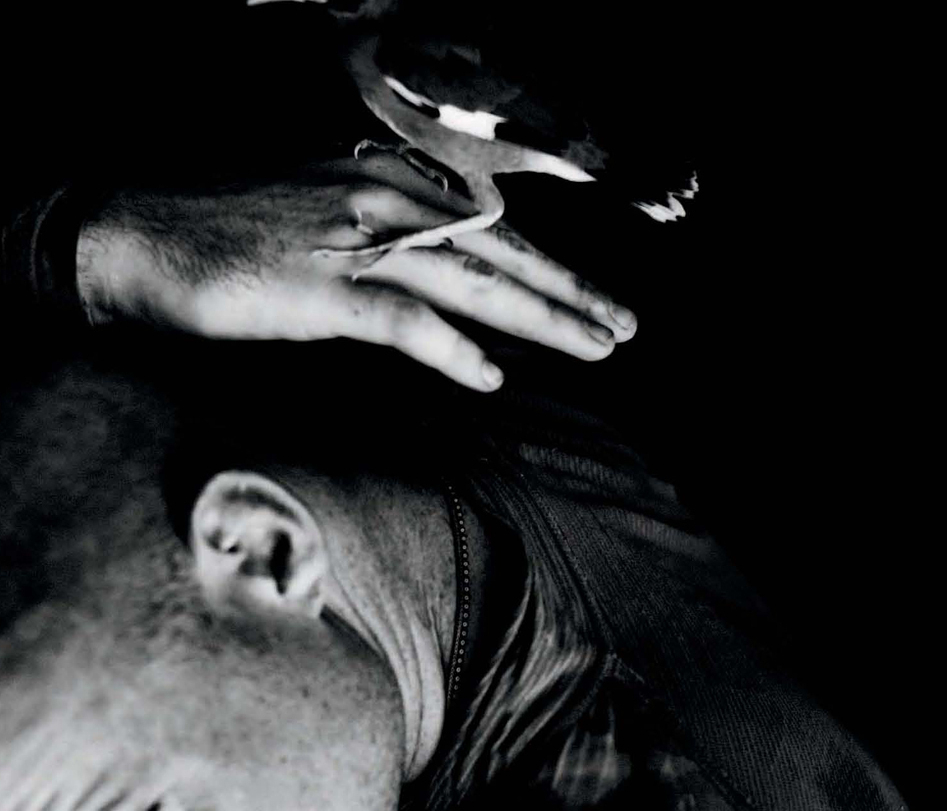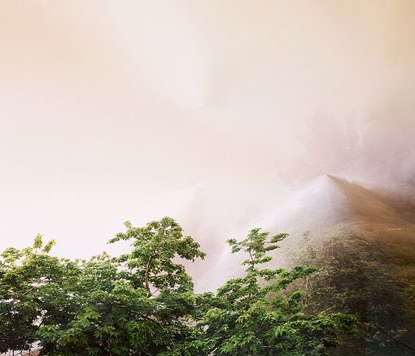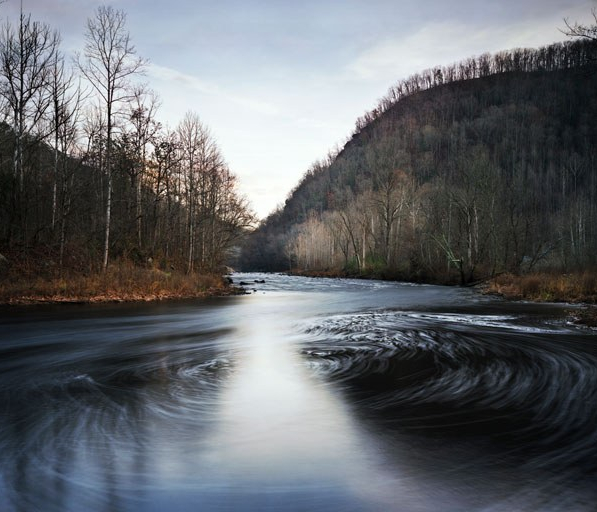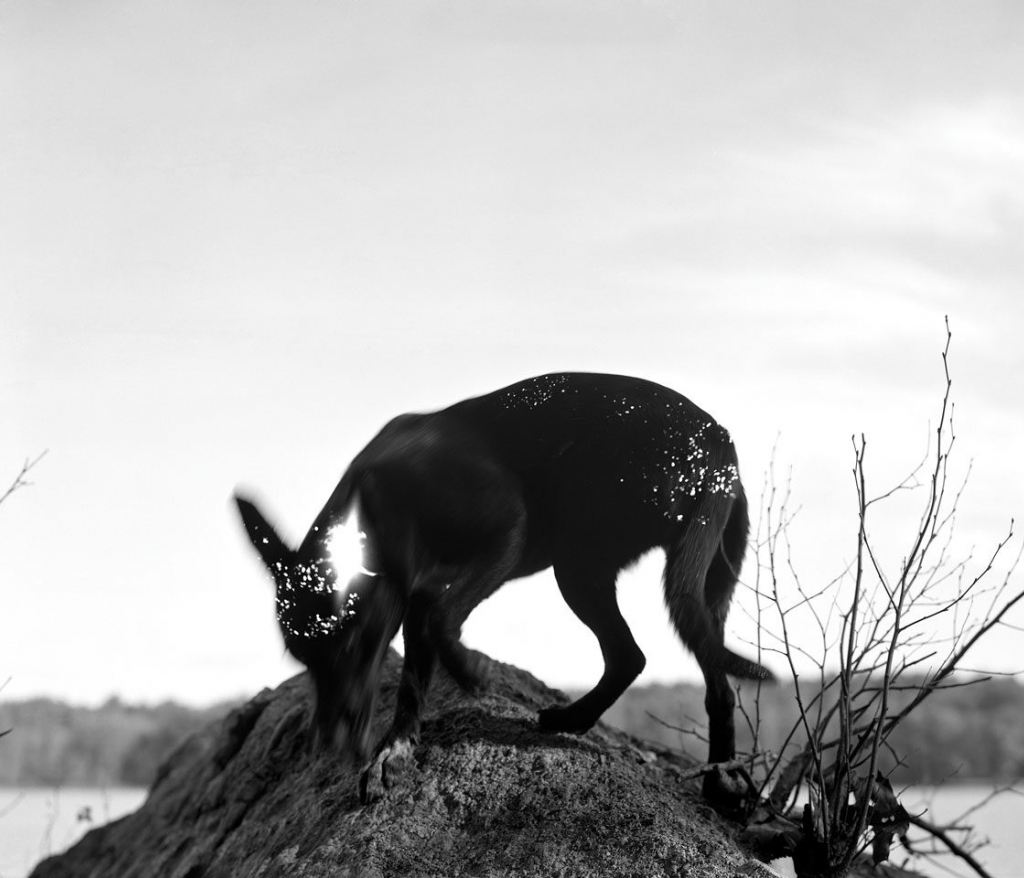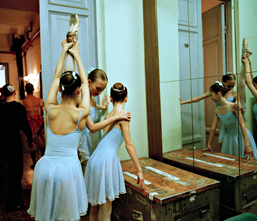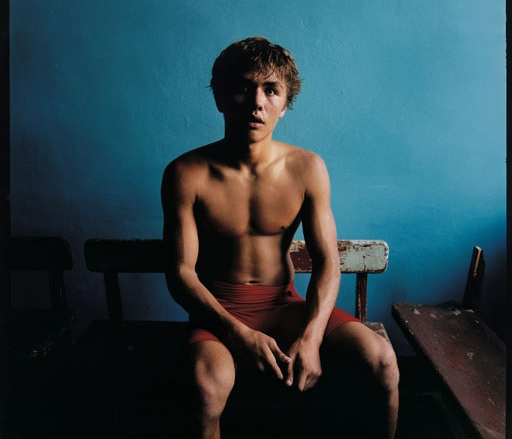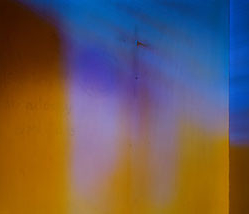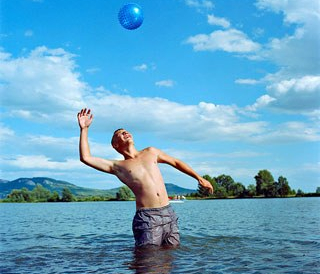Adam Katseff + Conner Green
Adam Katseff + Conner Green
How do you map and understand the essence of a space? Adam Katseff and Conner Green present us with a void. On one hand we have a world that simmers to the surface from a blanket of black. On the other, we have a tangle of lines that writhe and snake their way through empty whiteness. This visual rabbit hole draws us in and demands an intimate gaze. The images seem to suggest that if we look close enough we might be able to decipher the pith of these spaces.
In Katseff’s Whole Night series, stars and other artifacts are traced on film, as if by a needle. They are surprising in their delicacy. Like careful, sophisticated etchings, they are light to the touch and create a subtle, orderly kind of poetry. These are photography-specific openings of wonder, because each one is an entire night, a full stretch of time collapsed into one, minimal image. The paths of many stars create points of intersection that may not have even happened in real time but are there recorded in the photograph. Although careful and meticulous in his processes, Katseff eventually releases control, allowing the sky to collaborate as an author. In this sense, the sky is an architect, plotting out its elegant blueprints of the night.
Katseff’s Night Landscapes hover in the space where the images that linger behind our eyelids and our dreams collude. Here, these visions warble, shift and tilt between something foreboding and majestic. It’s akin to having a vivid dream, and looking at a very particular landscape with the idea that there must be some reason we’re seeing it. When wandering through a dream, with all its vagaries and odd moments of precision, we feel an intuitive sense of meaning with no concrete or logical articulation. Katseff creates this dialectic within the imagery- detail is suggested and there is the completeness of the scene, and yet we are unable to make overall sense of the information.
The time in Katseff’s Night Landscapes is not dusk but also is not full night. There is no good name for this particular state of time. It is a moment so short and instantaneous, that just as it arrives, it’s gone. Yet Katseff manages to capture the effect of this one precise moment. He is the conductor of an orchestra- somewhat like Chroma the Great in ThePhantom Tollbooth who plays the colors of the sunset. Katseff has brought the light to a faint diminuendo and then holds us, the audience, before it.
When we take in these images, we feel a sense of urgency, a subconscious desire to quickly make sense of it all before it vanishes. But it’s not going to vanish. In fact, the more time spent with a piece, the more the image will emerge. It’s a privilege to hold onto the fleeting moment of near-darkness as long as we please.
Katseff’s landscapes are ambitiously attached to the heels of a hefty landscape tradition. His work is deliberate and the locations are not chosen arbitrarily. Some of them derive their weight from historical events. Katseff is drawing from iconic landscapes, scenes to which many photographers have already paid a good deal of attention. In that sense, it’s a rather bold move for a conscientious contemporary photographer, to visit such already-played places with the intent to make a new image. However, Katseff has gone specifically to the thoroughly mined source and come out with something brand new. Katseff’s grand landscapes suggest that we have not yet thoroughly devoured these places through our consumption, that they are larger and more mysterious than we may have realized.
Katseff’s photographs of hauntingly obscured iconic landscapes create a thoughtful contrast to Green’s blueprints of prototypical, but non-existent buildings. The frenzy of lines that constitute the buildings are dense and draw our attention to them in a hopeful pursuit of clues, as if secrets may be discovered by searching through the mess. Lines with an audible radio wave-like quality invade the white expanse that surrounds the edifices. The drawings are in motion, and these ghosting vibrations creep like spider webs and eventually spill their structural elements outside of their own forms. In Municipium, the world has lost its ground as the webs of structure grow in every direction. This is an architect’s nightmare – the blueprint taking on a life of its own. Buildings transform into machines that write themselves. Their trajectory, like the course of a robot in a science fiction novel, grows with an inevitable life of its own. They become a living fortress, a dark living thing.
These images relate to Richard Ross’ project, Architecture of Authority,in which Ross explores the empty rooms that house power. By showing the context and the spaces without the inhabitants, Ross highlights elements of power subconsciously built into our environments. Green’s images could be the imaginative exteriors to Ross’s interiors. In these imaginations, Green has stripped the institutions of their human presence, exposing the language of control. Figures, when they appear, as in Municipium, seem not to belong to themselves or be any kind of individual being, but rather, they are a force in service of the structure. Any elements not related to the buildings are implements of conflict- guns, soldiers and guard towers. In Imperium, the massive structure nearly fills the entire frame, like a wall of force with a line of guardsmen facing off in front of it.
Green’s monumental monoliths, buildings isolated in a void, inhabit a space apart from any community. The iconic architectural forms that he references suggest history and age, and yet, we imagine these buildings to be part of some sort of futuristic society. We are looking both forward or back in time, and in this way, past, present, and future are collapsed into one frame. In one image Green is reflecting a bleak interpretation of our past and current society while at the same time revealing a possible future.
Somewhere between Katseff’s sooty and mysterious world of the night and Green’s stark city situated in unending white day, similar echoes radiate. We search through folded time for a place that we instinctually feel we must already know. We become transfixed and entangled in a perspective that is simultaneously fleeting and still. This way of looking is perplexing, and somehow we leave the image feeling that perhaps we missed the very thing that we were supposed to see.
– Mia Dalglish + Lisa Woodward
Night Landcapes & Whole Night Artist Statement
With four separate, but closely related series, my work references subjects both elemental and deeply familiar: fire, land, the night sky, the empty room. Through use of minimal, subtractive form the viewer is invited to compose the remainder of the image themselves. In this way our experience of the work becomes at once universal and deeply personal – an exploration of the line between physical space and our psychological relationship to it. Whether an image emerges slowly from the dark or is dominated by light, these photographs convey a sense of place where past, present and future are collapsed into a single state of time. In this way, spaces of personal, shared or historical significance are transformed into places of spiritual significance. Something both intimate and sublime operates within these images, transporting us to a place outside of place, a time independent of time. This feeling of eeriness, of otherness speaks to a truth hidden behind everyday observation – a sense that what colors our experience is not merely a landscape, a room, a night sky, a flame, but something greater; something more.
Artist Bio
Adam Katseff was born in North Andover, Massachusetts and currently lives and works in Palo Alto, California. He received a BFA from Massachusetts College of Art, and an MFA from Stanford University where he now teaches. His work has been shown at the San Francisco Arts Commission Gallery, The Lab, Root Division, Berkeley Art Center, and the Michael and Noemi Neidorff Gallery at Trinity University. He is the recipient of the Murphy and Cadogan Contemporary Art Award, as well as the Anita Squires Fowler Award.
Imperia Artist Statement
I am interested in how we as humans understand and interact with monumental structures and spatial domains. I understand ‘architecture’ to refer to more than just the design and decoration of buildings, but also to human thoughts or actions that make order and meaning out of random space. My work, in part, attempts to excavate and expose these embedded meanings.
In Imperia, I sought to create a kind of typological architectural survey. Each piece is a densely layered and abstracted composition that depicts an iconic architectural form. The structures themselves are not intended to represent any specific existing structure but rather to portray an abstracted composite of different built forms throughout history. The work is created using a unique process, compiling hundreds of architectural blueprints and my own drawings or photographs and subsequently constructing them on a digital platform. I use the otherwise systematic, orderly language of architecture— blueprints—to create something chaotic and violent, subverting the process of ‘architectural’ creation.
Artist Bio
Conner Green is an interdisciplinary artist currently living in Madison, WI. Born in Indianapolis, IN, he studied art and literature at Indiana University. His work has been exhibited throughout the United States and abroad. In 2012 he was featured in an exhibition entitled “Future Tense : The New Monochromatic” at the TOC Gallery in Kobe, Japan. In 2010 he was the recipient of the National Society of Arts and Letters Chapter Career Award. He has worked at the International Center of Photography in New York City and at the Indianapolis Museum of Art. He is currently an instructor and MFA Candidate at the University of Wisconsin, Madison.
www.connergreen.net
Adam Katseff + Conner Green
How do you map and understand the essence of a space? Adam Katseff and Conner Green present us with a void. On one hand we have a world that simmers to the surface from a blanket of black. On the other, we have a tangle of lines that writhe and snake their way through empty whiteness. This visual rabbit hole draws us in and demands an intimate gaze. The images seem to suggest that if we look close enough we might be able to decipher the pith of these spaces.
In Katseff’s Whole Night series, stars and other artifacts are traced on film, as if by a needle. They are surprising in their delicacy. Like careful, sophisticated etchings, they are light to the touch and create a subtle, orderly kind of poetry. These are photography-specific openings of wonder, because each one is an entire night, a full stretch of time collapsed into one, minimal image. The paths of many stars create points of intersection that may not have even happened in real time but are there recorded in the photograph. Although careful and meticulous in his processes, Katseff eventually releases control, allowing the sky to collaborate as an author. In this sense, the sky is an architect, plotting out its elegant blueprints of the night.
Katseff’s Night Landscapes hover in the space where the images that linger behind our eyelids and our dreams collude. Here, these visions warble, shift and tilt between something foreboding and majestic. It’s akin to having a vivid dream, and looking at a very particular landscape with the idea that there must be some reason we’re seeing it. When wandering through a dream, with all its vagaries and odd moments of precision, we feel an intuitive sense of meaning with no concrete or logical articulation. Katseff creates this dialectic within the imagery- detail is suggested and there is the completeness of the scene, and yet we are unable to make overall sense of the information.
The time in Katseff’s Night Landscapes is not dusk but also is not full night. There is no good name for this particular state of time. It is a moment so short and instantaneous, that just as it arrives, it’s gone. Yet Katseff manages to capture the effect of this one precise moment. He is the conductor of an orchestra- somewhat like Chroma the Great in ThePhantom Tollbooth who plays the colors of the sunset. Katseff has brought the light to a faint diminuendo and then holds us, the audience, before it.
When we take in these images, we feel a sense of urgency, a subconscious desire to quickly make sense of it all before it vanishes. But it’s not going to vanish. In fact, the more time spent with a piece, the more the image will emerge. It’s a privilege to hold onto the fleeting moment of near-darkness as long as we please.
Katseff’s landscapes are ambitiously attached to the heels of a hefty landscape tradition. His work is deliberate and the locations are not chosen arbitrarily. Some of them derive their weight from historical events. Katseff is drawing from iconic landscapes, scenes to which many photographers have already paid a good deal of attention. In that sense, it’s a rather bold move for a conscientious contemporary photographer, to visit such already-played places with the intent to make a new image. However, Katseff has gone specifically to the thoroughly mined source and come out with something brand new. Katseff’s grand landscapes suggest that we have not yet thoroughly devoured these places through our consumption, that they are larger and more mysterious than we may have realized.
Katseff’s photographs of hauntingly obscured iconic landscapes create a thoughtful contrast to Green’s blueprints of prototypical, but non-existent buildings. The frenzy of lines that constitute the buildings are dense and draw our attention to them in a hopeful pursuit of clues, as if secrets may be discovered by searching through the mess. Lines with an audible radio wave-like quality invade the white expanse that surrounds the edifices. The drawings are in motion, and these ghosting vibrations creep like spider webs and eventually spill their structural elements outside of their own forms. In Municipium, the world has lost its ground as the webs of structure grow in every direction. This is an architect’s nightmare – the blueprint taking on a life of its own. Buildings transform into machines that write themselves. Their trajectory, like the course of a robot in a science fiction novel, grows with an inevitable life of its own. They become a living fortress, a dark living thing.
These images relate to Richard Ross’ project, Architecture of Authority,in which Ross explores the empty rooms that house power. By showing the context and the spaces without the inhabitants, Ross highlights elements of power subconsciously built into our environments. Green’s images could be the imaginative exteriors to Ross’s interiors. In these imaginations, Green has stripped the institutions of their human presence, exposing the language of control. Figures, when they appear, as in Municipium, seem not to belong to themselves or be any kind of individual being, but rather, they are a force in service of the structure. Any elements not related to the buildings are implements of conflict- guns, soldiers and guard towers. In Imperium, the massive structure nearly fills the entire frame, like a wall of force with a line of guardsmen facing off in front of it.
Green’s monumental monoliths, buildings isolated in a void, inhabit a space apart from any community. The iconic architectural forms that he references suggest history and age, and yet, we imagine these buildings to be part of some sort of futuristic society. We are looking both forward or back in time, and in this way, past, present, and future are collapsed into one frame. In one image Green is reflecting a bleak interpretation of our past and current society while at the same time revealing a possible future.
Somewhere between Katseff’s sooty and mysterious world of the night and Green’s stark city situated in unending white day, similar echoes radiate. We search through folded time for a place that we instinctually feel we must already know. We become transfixed and entangled in a perspective that is simultaneously fleeting and still. This way of looking is perplexing, and somehow we leave the image feeling that perhaps we missed the very thing that we were supposed to see.
– Mia Dalglish + Lisa Woodward
Night Landcapes & Whole Night Artist Statement
With four separate, but closely related series, my work references subjects both elemental and deeply familiar: fire, land, the night sky, the empty room. Through use of minimal, subtractive form the viewer is invited to compose the remainder of the image themselves. In this way our experience of the work becomes at once universal and deeply personal – an exploration of the line between physical space and our psychological relationship to it. Whether an image emerges slowly from the dark or is dominated by light, these photographs convey a sense of place where past, present and future are collapsed into a single state of time. In this way, spaces of personal, shared or historical significance are transformed into places of spiritual significance. Something both intimate and sublime operates within these images, transporting us to a place outside of place, a time independent of time. This feeling of eeriness, of otherness speaks to a truth hidden behind everyday observation – a sense that what colors our experience is not merely a landscape, a room, a night sky, a flame, but something greater; something more.
Artist Bio
Adam Katseff was born in North Andover, Massachusetts and currently lives and works in Palo Alto, California. He received a BFA from Massachusetts College of Art, and an MFA from Stanford University where he now teaches. His work has been shown at the San Francisco Arts Commission Gallery, The Lab, Root Division, Berkeley Art Center, and the Michael and Noemi Neidorff Gallery at Trinity University. He is the recipient of the Murphy and Cadogan Contemporary Art Award, as well as the Anita Squires Fowler Award.
Imperia Artist Statement
I am interested in how we as humans understand and interact with monumental structures and spatial domains. I understand ‘architecture’ to refer to more than just the design and decoration of buildings, but also to human thoughts or actions that make order and meaning out of random space. My work, in part, attempts to excavate and expose these embedded meanings.
In Imperia, I sought to create a kind of typological architectural survey. Each piece is a densely layered and abstracted composition that depicts an iconic architectural form. The structures themselves are not intended to represent any specific existing structure but rather to portray an abstracted composite of different built forms throughout history. The work is created using a unique process, compiling hundreds of architectural blueprints and my own drawings or photographs and subsequently constructing them on a digital platform. I use the otherwise systematic, orderly language of architecture— blueprints—to create something chaotic and violent, subverting the process of ‘architectural’ creation.
Artist Bio
Conner Green is an interdisciplinary artist currently living in Madison, WI. Born in Indianapolis, IN, he studied art and literature at Indiana University. His work has been exhibited throughout the United States and abroad. In 2012 he was featured in an exhibition entitled “Future Tense : The New Monochromatic” at the TOC Gallery in Kobe, Japan. In 2010 he was the recipient of the National Society of Arts and Letters Chapter Career Award. He has worked at the International Center of Photography in New York City and at the Indianapolis Museum of Art. He is currently an instructor and MFA Candidate at the University of Wisconsin, Madison.
www.connergreen.net
